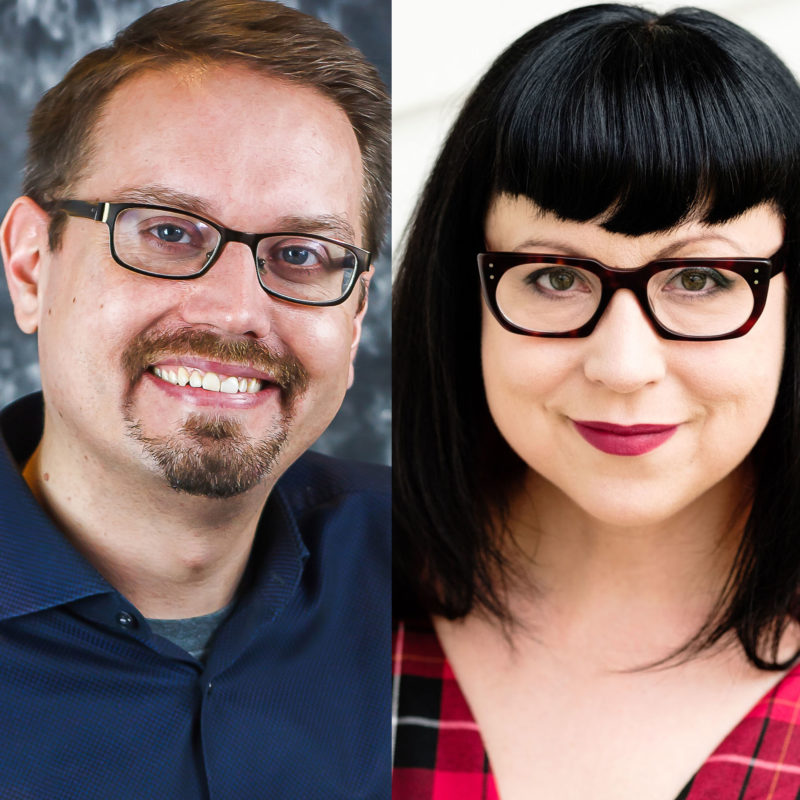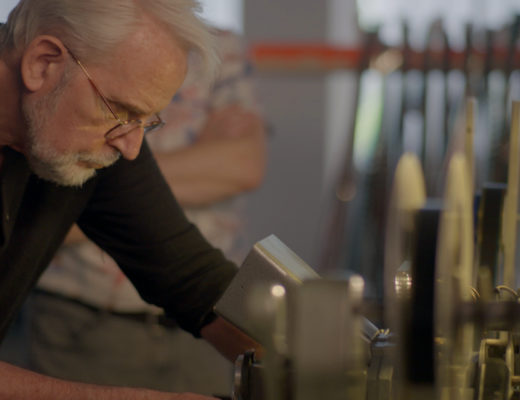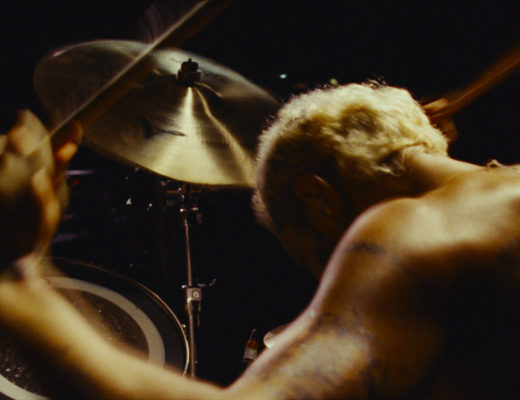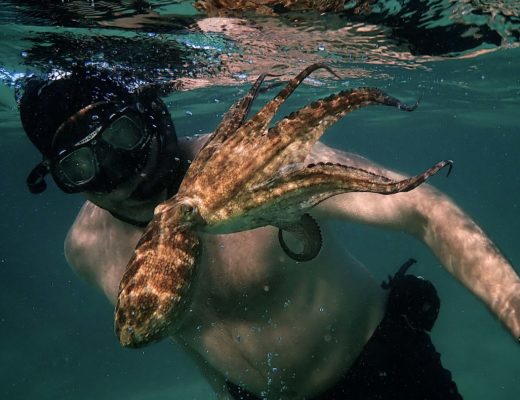My guests for this Art of the Cut interview are Jay Prichidny and Cheryl Potter.
Cheryl’s filmography as an editor includes the TV series Hanna and The Alienist and four of the episodes on Snowpiercer. She has been Additional editor on Solo: A Star Wars Story, Alien Covenant, and The Martian.
I’ve interviewed Cheryl before on Art of the Cut for her work with Pietro Scalia, ACE on the movie The Martian.
Jay Prichidny cut five of the episodes of Snowpiercer including the formative Episode 1. Jay’s background also includes editing The Alienist along with stints on Altered Carbon, Orphan Black and reality show work like The Amazing Race Canada and Top Chef Canada.
Other editors on the series were Marta Evry, Jamie Alain, D. Gillian Truster, Allan Lee, Steve Polivka, Rebecca Valente, and Justin Li.
This interview is available as a podcast.
(This interview was transcribed with SpeedScriber. Thanks to Martin Baker at Digital Heaven)
HULLFISH: I’m assuming you both watched the movie before you started on the series.
POTTER: Yeah I’d actually seen it because it was one of those Netflix gems. It’s a film that not many people have heard of. And when you find out the history behind the film — the reason nobody heard of it was that Weinstein had had a blow-out with the director and he’d tried to bury it.
PRYCHIDNY: I watched the film after I knew I would be doing the show. Personally, I didn’t even really like the film that much. There are just a lot of things about it that I didn’t enjoy, but the cool thing about the series is that — for me, just for me personally, for my own tastes — the series kind of changed a lot of those things that I didn’t like.
It was going to go to different parts of the train, so you’d have more of an overview of how the whole train works — which for me personally, I just like that idea better. And there would be more characters throughout all the different classes and get more of an overview of how the whole class structure works. I’m biased I guess because I worked on the show. That’s what I was really interested in.
HULLFISH: How did both of you end up with this job? What was the process? Or did you know the producers, for example?
POTTER: Jay, you should go first because you’ve got the history here.
PRYCHIDNY: Graeme Manson is the showrunner and he was also the showrunner of Orphan Black, which was a show I edited for four seasons.
I was the only editor — the only person in post — who they brought on to Snowpiercr. The entire rest of the post team was new. There was some desire from the network side to have new people involved in the show, not just people from Orphan Black, so I was really the only one who was able to move on to working on Snowpiercer.
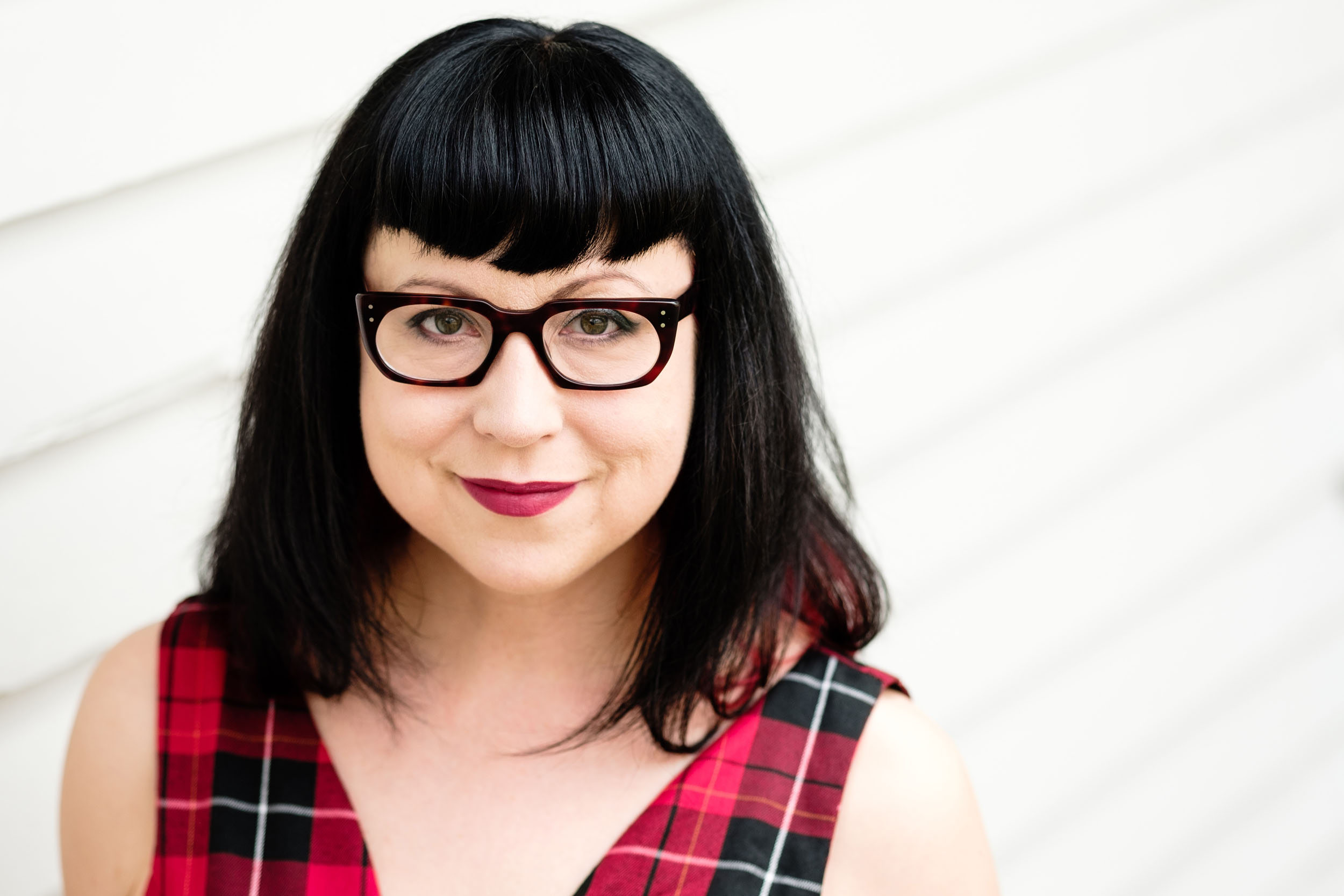
POTTER: It was a bit more random for me. I remember having an interview with Graeme Manson and James and feeling like, That was a really good interview. I feel like we all got along really well. And then I didn’t hear anything for months.
I figured nothing’s happening. Then, after I’d finished working on Hanna — Hanna is Tomorrow Studios, which is Becky Clements — and towards the end of my run on Hanna, Becky asked, “Hey what are you up to next?” And because she was involved in Snowpiercer as well that was the thing.
I had this interview months before, but then it kind of paid off with this connection with one of the producers from the Tomorrow Studios side. I was originally only gonna do one episode. Jay was doing beginning, end, and middle, and they were going to have five editors total with about two episodes per editor and I was the one who was coming in just to do one. And I ended up doing four.
PRYCHIDNY: Are there any specific challenges because it’s a train?
POTTER: Yeah! It’s all interiors.
HULLFISH: Why do you find that’s tricky?
PRYCHIDNY: It depends on the episode, but it was certainly a challenge in episode one. I was still editing episode one three months ago. (We did this interview in mid-June 2020 The show premiered in May of 2020.) So I really have been working on that episode for almost two years.
It was a challenge in episode one because you have no sense of time passing. A lot of it is interiors. A lot of times you don’t have windows. All those things that usually indicate days passing — people are often wearing the same outfits because they’re in uniforms.
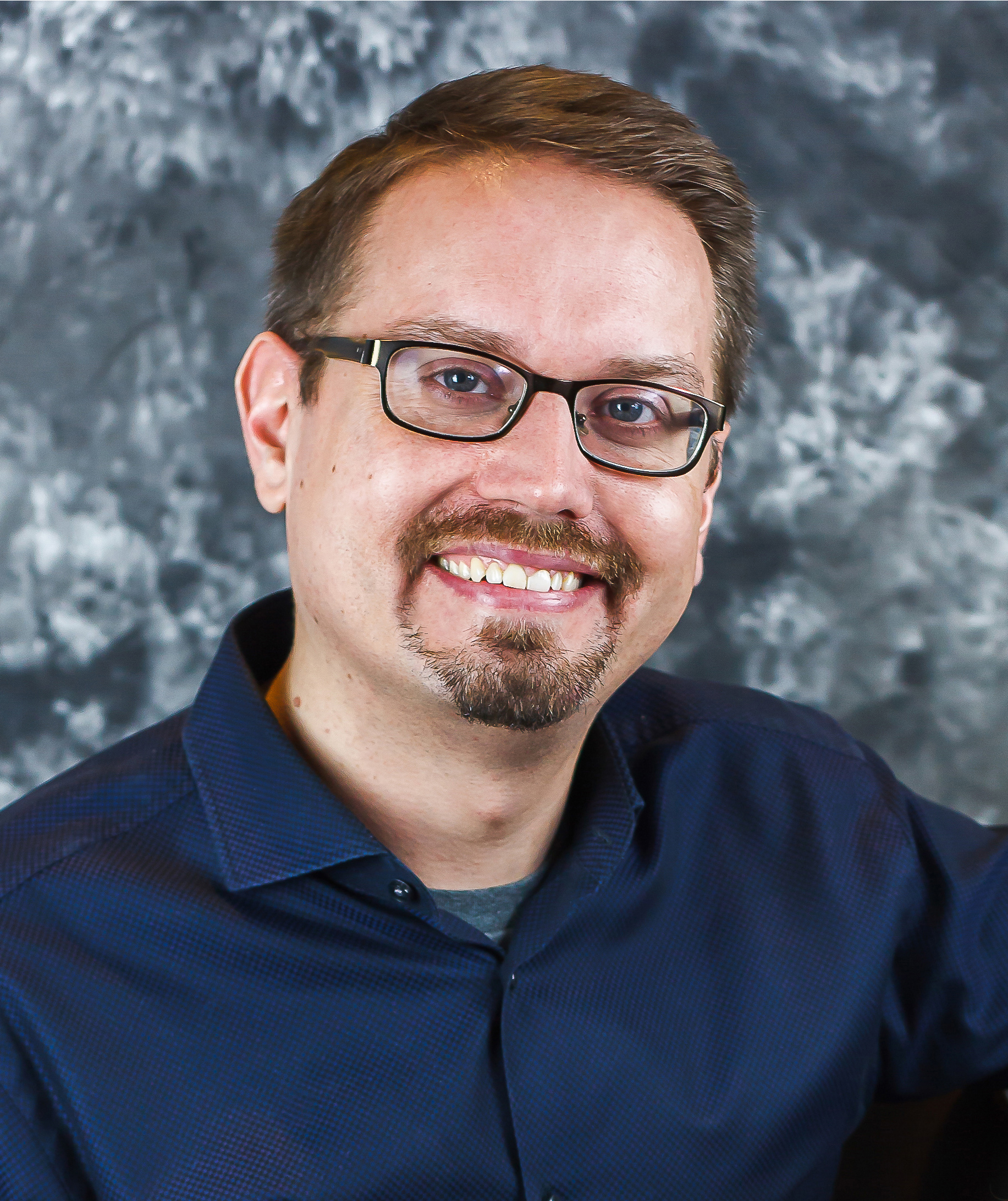
That was a really tricky thing in episode one for sure because it happens over a number of days and you have to kind of make that clear or else the plot doesn’t really make sense, but you’re always in the tail (of the train) with no windows. A lot of that ends up getting handled in how things are structured or with ADR.
HULLFISH: What were some of the methods you came up with to show the passage of time for example?
PRYCHIDNY: That’s what’s coming to mind — trying to solve it with just signposting those kinds of things in new dialogue. Also being strategic with where your exteriors are used. We only had very, very few exteriors. In the original plan, episode one was only planned to have one exterior.
For a while, it was a concept not to show the train. They thought that would be an interesting concept. It doesn’t work because you expect to see the train.
HULLFISH: Cheryl is shaking her head.
POTTER: Well it’s true. You need to see the train. The train is almost a character in the show. Where you would put an establishing shot — for example when you go to a new place on a regular show — you would use an exterior shot of the location you’re going to or an aerial. But we’re ALWAYS on the train.
And you don’t want to use too many train shots because the train — while it looks spectacular — it’s expensive every time you go to one of those shots, it’s a visual effects shot.
PRYCHIDNY: I think we ended up with around six or seven exterior shots in episode one. Some of those were strategically used as a time cut, just to try to make sense of the timing of everything.
POTTER: The other challenge of it being on the train is because of the way they were recycling the train sets. So the mess hall was also the children’s classroom and the third-class market doubled as the Chains.
They would need to “shoot out those sets” (meaning to completely shoot all scenes in those locations and wrap production in those sets) before they could redress them to be the new sets. So it means that you’ll constantly be missing pieces. You don’t have THIS scene. You don’t have THAT scene. You don’t have these THREE scenes until we have that set and we could shoot it.
Most famously, in episode one, Jay didn’t get the greenhouse scene for ages! Episode 1 had a hole in it for quite a long time.
HULLFISH: You mentioned ADR. What was the process for deciding new ADR needed to go in? Obviously, the showrunner is there. One of the differences between TV and film would be that TV is such a writer’s medium, so you’ve got a showrunner there that could help you. But is that something where the editors were saying, “This is not gelling for me, or is not making sense. I think we need a line.” Or was it more the showrunner deciding that or a combination.
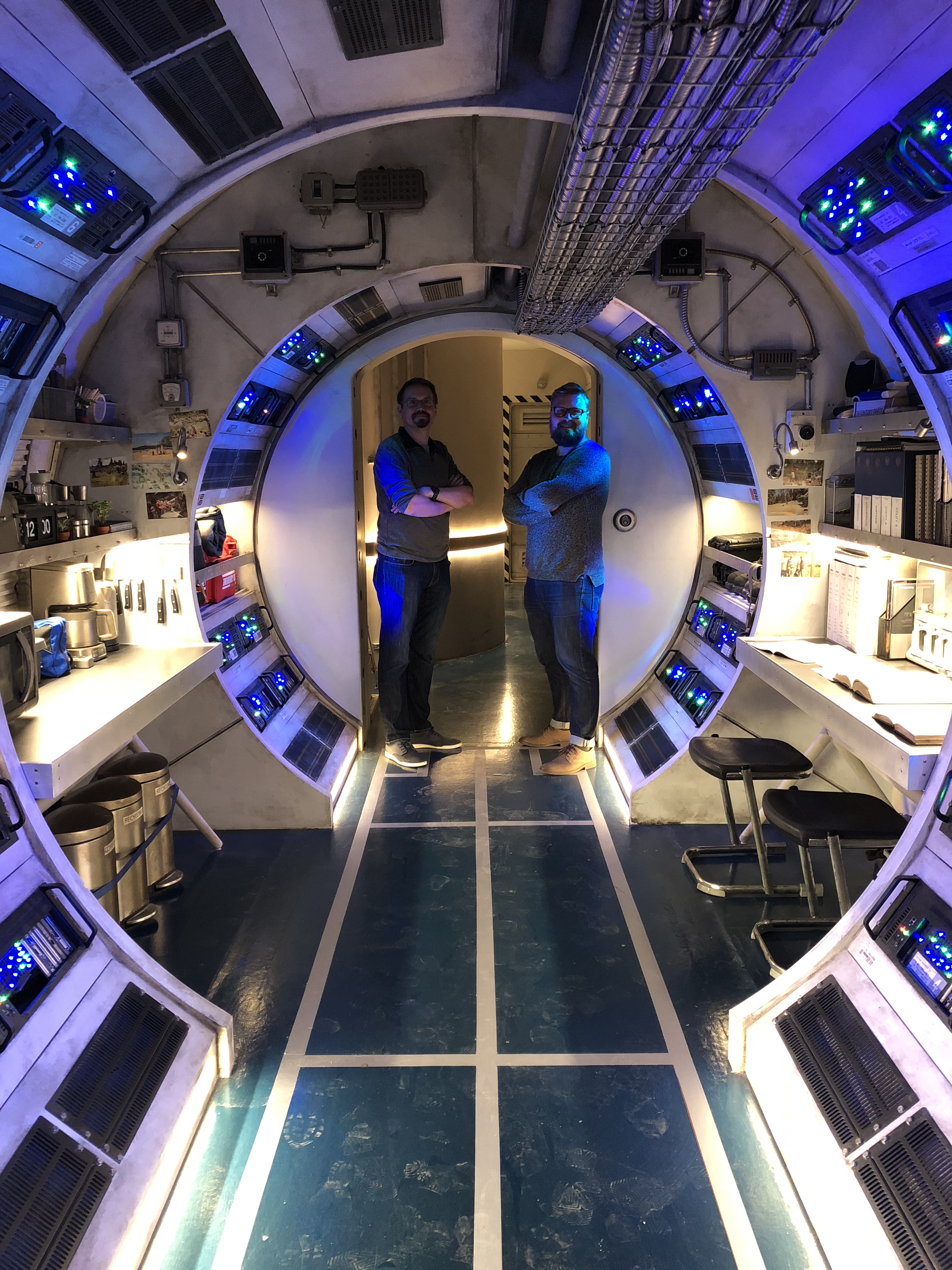
PRYCHIDNY: On Orphan Black in the later seasons I was also a producer on that show, so I was used to just taking the lead on that kind of stuff. Oftentimes it would be my initiative. Or if people are having a plot problem or something then they may not specifically request ADR but I’ll write new dialogue to address the problem.
I always like things to be as good as I can make them before other people see them as opposed to waiting for someone to tell me there is a problem.
POTTER: It was the kind of show where nobody was going to get offended if you said, “I think we need a line here.” Obviously, you put the line in with the idea that “If you want to change it, please do. Obviously I’m not a writer.”
I’ll just write something to give the gist, but a lot of the time it would stick. Sometimes we wrote some ADR to make sure that important information was being absorbed. Sometimes there was something that exists in the environment that — maybe on the script page was very clear — but once you actually are in the film you’re not absorbing this piece of information so you actually need someone to say it, so you know what’s going on.
PRYCHIDNY: I think that’s the challenge of a show like this, which is very plot-heavy — it has a fast-paced plot that moves really, really quickly — and what often seems to make sense on the page, when you get it to the screen all those plot developments are not landing properly and so ADR is just one of those tools — when you can see it afterward — you can see where the plot is being lost and you can fill in.
HULLFISH: The other interesting thing that you mentioned is the idea that a critical scene missing for a long time, because of the way they’re shooting sets. Was it hard not to be able to see your scene in context?
POTTER: I think there were some flashback scenes that I didn’t get until the very end. So you’ll be looking at someone — their eyes fluttering and they’re having this sequence of memories — and then you’re cutting to a card on a screen saying what’s missing, and it’s like that for a really long time.
It’s more about the rhythms, so when you’re watching the show you might have the whole rest of the show and all that’s missing is these three moments. But the card on the screen is only on the screen for five seconds but that sequence might end up being a minute-and-a-half.
When you’re watching it, what you read on that card is not going to stick in your mind, so you won’t get the full experience of what it’s going to be like, and so it’s very easy — after you’ve watched it — to feel like you didn’t really understand it or have that plot-point land emotionally because it wasn’t REALLY there.
PRYCHIDNY: Intellectually you read what’s on the card but emotionally it doesn’t work. There is a benefit to it as well. There were so many parts of episode one that were not filmed. I just had slugs in for them, but it was a benefit because act one of Episode 1 did not work at all.
Seeing it with the slugs, I knew it didn’t work at all. So there was a benefit that so much of it had not been filmed because I could “ring that bell” and get some writing changes made and change some of the focus of some of those scenes that were yet to be filmed in order to try to bring it together.
HULLFISH: It’s so interesting to me that shows and movies — which are obviously very well thought-out. They’re very well developed. They’ve got a lot of smart people — many brains saying, “This is a great script. We’re ready to go into production on them” and yet it’s only in post that you see the context.
What do you think it is about seeing it edited together that makes it different than the same smart people looking at a script and not seeing there’s a problem?
PRYCHIDNY: Great question! I come in these shows after the fact. It’s often hard to know. I think sometimes the prose in the scripts makes people feel like there’s more than there is. I think that’s a problem that happens sometimes. If you’re not really thinking through visually — “what are you seeing?” — you might just read the prose and accept it, but it hasn’t been visually told. That happens sometimes. That’s one reason.
HULLFISH: I’ve seen it where the description in a script isn’t visualized.
POTTER: Yes.
HULLFISH: So you read something in the description that you can read and understand the story, but it never is actualized on film.
PRYCHIDNY: Or on Snowpiercer you’d have a large train story where there’s a story about disconnecting certain cars and shunting them off to another track and reconnecting the train. You can read that In prose and understand that’s what’s happening, but the visuals of that don’t come through when you just have actors in a room. How are we getting this whole story about this big train story that’s going on? There are translation issues that don’t get revealed until the edit.
POTTER: There are also things that might be in the prose that are pointing out things that when you read them you absorb them, but then the way they direct the scene it gts gets missed or the performer doesn’t do it. Then you don’t have it.
Because of the way that the shows are made, quite often what’ll end up happening is the scripts get approved and the networks see the cut and they say, “What happened to that thing that I remember reading in the script? It’s not in the show.” They remember it because they remembered reading it, but maybe it’s something that you’ve ended up having to throw out because it’s not in the footage.
HULLFISH: And the reverse happens, too. They write scenes where you have a talented actor and a director that’s working with them beautifully and they can give you so much that you don’t need to hear the explanatory dialogue. Then the dialogue can go because the visuals and acting have accomplished the same thing.
PRYCHIDNY: Exactly. I find that those problems are kind of compounded on a show like this where plot moves super, super fast and so much of it is about the plot. Because sometimes you can see the first kind of an episode and just not be able to follow it at all. It happens fairly often. You’ll watch a first edit and you can’t follow a thing that’s going on.
HULLFISH: Let’s continue to talk about context. You always start by cutting a scene. Is part of your process to read the scene before and the scene after? When you’re cutting scene 2, do your read scene 1 and scene 3 just before you cut it? Or do you know it in your head?
POTTER: If I don’t recall in my head what I’m coming out of going to, I’ll read it to remind myself — because it’s good to know where I’m coming from, where am I going, and what are the stakes.
That doesn’t necessarily have to be the very first thing you do, because sometimes when you’re assembling you’ve just got to put the pieces together and see what you’ve got and make sure that it’s working. Then afterward you can see where that fit’s in the larger picture. It’s a question that you ask at some point.
PRYCHIDNY: I always try to come to a scene — even before I see the footage — with my own sense of what it’s supposed to be. Oftentimes, you can fall into the trap of just editing what they shot. Sometimes that works, but if they didn’t shoot it right, then it doesn’t work.
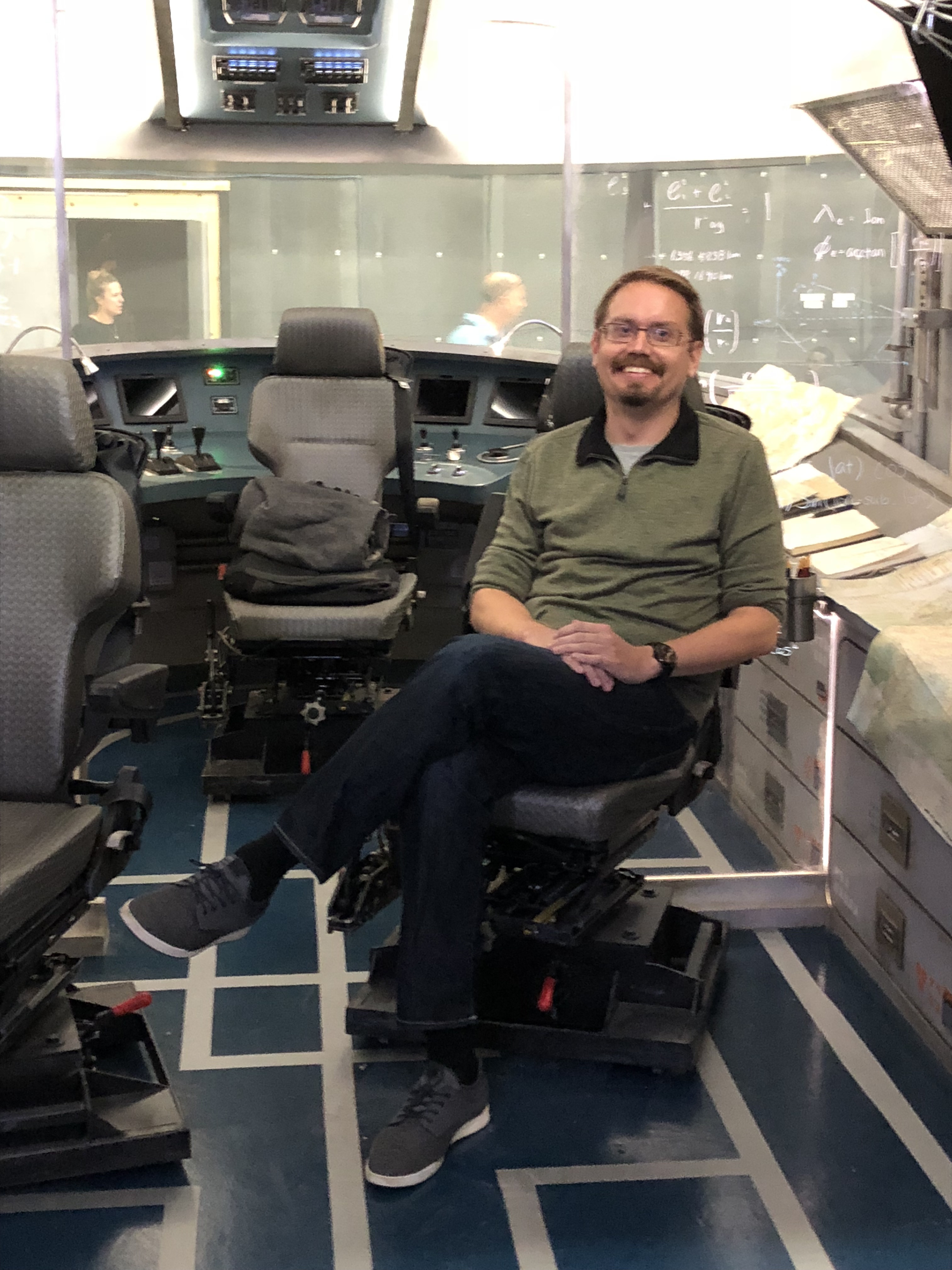
I always try to come into a scene with precisely my own take on how it should feel, what the tone should be, what it should be accomplishing, and then I try to make it fit that, whether they shot it that way or not. Hopefully, they did.
I think that comes from my background in reality TV, where you have a bunch of footage and you have to fit it to make it what it’s supposed to be, not what they shot. I approach scripted drama in the same way, in that I have this idea of how it’s supposed to feel, where it’s supposed to go, where it’s coming from, and where it’s going. And then just (they both start laughing) MAKE IT BE THAT!
HULLFISH: Can you think of a time when you were you thought you had scene 2 cut right but then you see scene 1 and 3 scene now scene 2 doesn’t work the way you thought it worked?
PRYCHIDNY: That’s not my process really, because I have this thought process going into the episode of how it should feel and go and I’m always aware of where things are coming from or going, even if it’s a scene I haven’t edited yet.
My cuts are usually like my first cut. I don’t do a lot of re-cutting or anything. The way I present it — there’s been one version. Then obviously, with other people’s input, it changes and goes from there.
It’s very rare that I put something together and I say, “Oh geez! This is not what I thought it was supposed to be.”.
HULLFISH: Does the transition change when you see the scenes bolted together?
PRYCHIDNY: No. Because I think about that stuff too, and I imagine the transitions ahead of time even if I don’t have them yet. It’s just the way my brain works.
POTTER: I’m probably more compartmentalized. I’ll work on a scene. I’ll look at what I have and what I respond to and what works for me. Obviously, I know what I want to have happen in a scene — what we try and bring across — but sometimes you’ll get something in a performance that you want to focus on, or draw out or that wasn’t necessarily what was scripted but it’s working and you like it. So you want it to be in there.
So then you have this little capsule of a scene — your first pass on the scene — and then when I eventually get the scene that comes after it or the scene that comes before it, I start sticking them together.
Then I can see, “Oh, scene 2 I want to start on a close-up, so I’m going to have to change the way I end scene 1. Then I figure out the best way to transition between them. Or if I end this scene on this person’s face and stop the next scene on that person’s face then I can draw a link between the two or make a comparison or somehow tie it together emotionally.
It’s more of a process of discovery for me looking at what I have and trying to make it work the best way that I can. I’m not necessarily coming to it with a grand plan of I’m going to take this footage and make it fit in this very specific idea of what I think it should be.
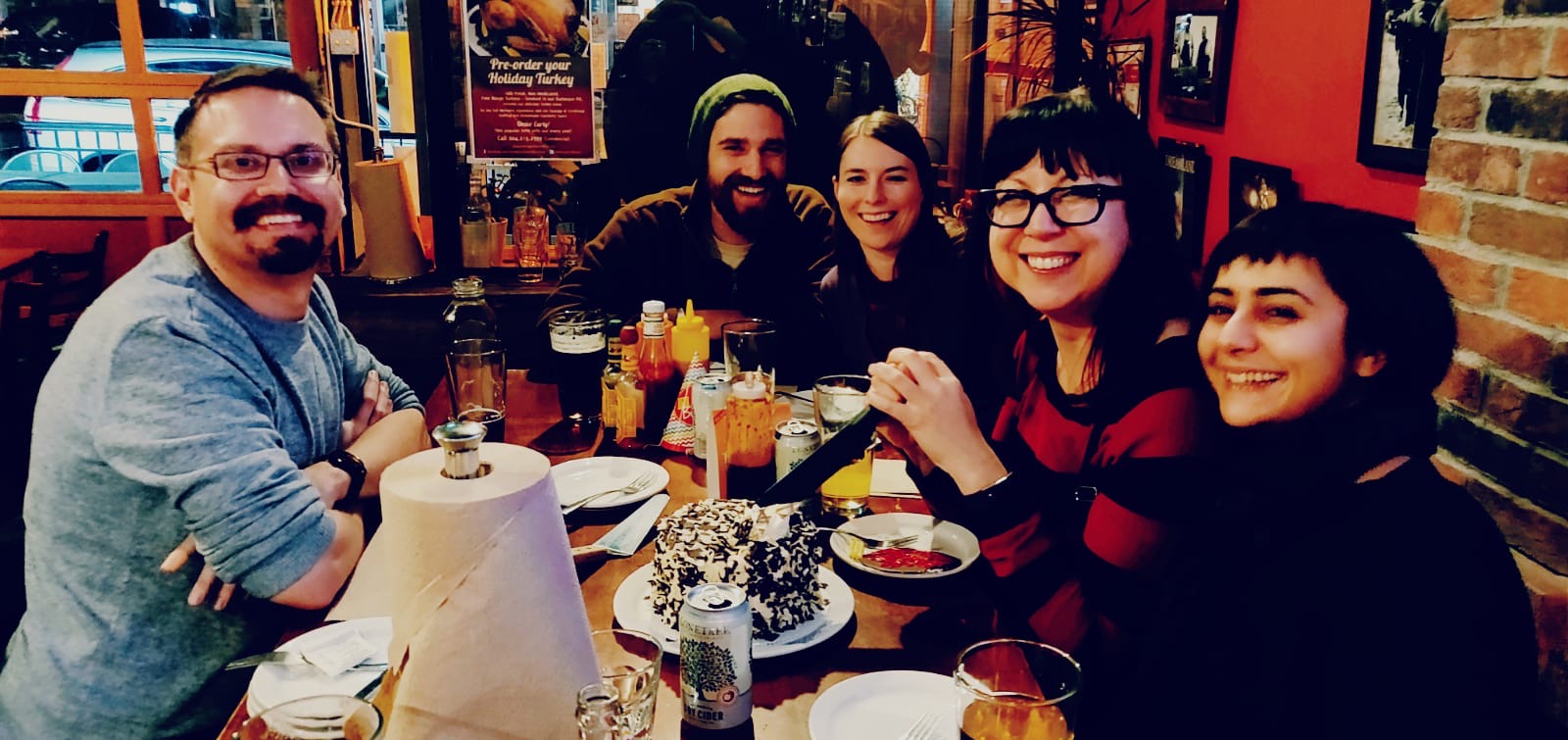
PRYCHIDNY: Oh my God! Are you throwing shade on me right now?
POTTER: It’s a different approach! And I think it just shows a different way that you come to it. Like you said, from a reality background. You know what you want it to be. You’re gonna make it work.
PRYCHIDNY: I come to it with an idea, but there are obviously those moments where something totally unexpected happens that’s wonderful — that wasn’t planned and then you reshape your concept to fit that into it. But for me, I like to have the idea beforehand, because when something unexpected happens then I have a filter to be able to say, Well, is that right or not?
A lot of times actors will do something totally unexpected and crazy. Sometimes it’s wonderful and amazing. Sometimes it’s just crazy. So I already have my filter on how to judge that.
HULLFISH: One of the reasons why I do these interviews is because everybody has a different process and a different idea of the way they go together, so I don’t think it was shade so much.
POTTER: No. Let’s pretend it was shade and we hate each other.
PRYCHIDNY: You need some drama right.
HULLFISH: What is the conflict in this interview? Let me see if I can draw this out a little bit more.
PRYCHIDNY: Yeah. There are lots of buried tensions between me and Cheryl. Oh my God! Yeah, yeah. Jay is the perfect editor. No. He actually is. I wasn’t kidding.
HULLFISH: To go with a less conflicting question: What was the schedule? You said you’d been working — Jay — for a long time on the pilot at least.
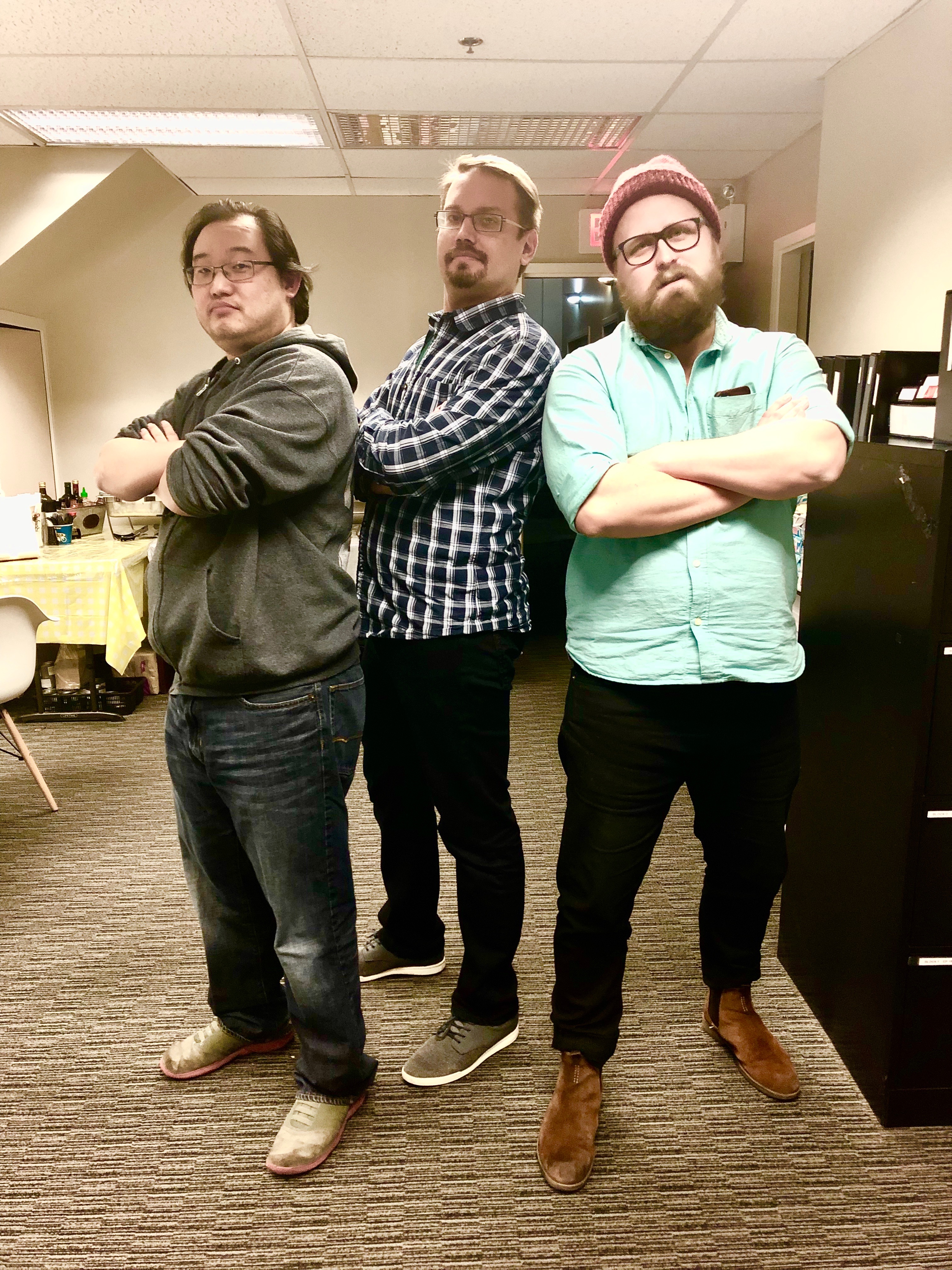
PRYCHIDNY: They started filming in July or August of 2018. They really shot episode 1 over the entire production of season 1. Some of the last stuff they shot was even still episode one. It was scheduled to be a nine-day shoot or something. I think it turned into a 30-day shoot.
POTTER: I think the rest of the blocks got like 10 days to shoot their episodes. Episode 1 was supposed to get 10 days but ended up being spread. I think Episode 5 — which was the first one I came on to do — ended up having all my footage for that episode. I had everything for episode 5 before you had everything for episode 1.
PRYCHIDNY: Because the release of the show was delayed, they had an opportunity to go back and do reshoots for Season 1. So they did reshoots for episodes 1, 2, 3, and 5 in February of this year — of 2020.
I was editing those reshoots to go into Episode 1 just a few months ago, but there were also just other editorial changes that happened to all the episodes just because they’ve been sitting around — people want them to be as good as possible. I was still editing just before they came out.
HULLFISH: So if I’m understanding this correctly, you delivered everything at the same time?
PRYCHIDNY: We delivered episodes 1, 2, 3, 5, and 6 just a few months ago because those all had very recent edit changes done to them. The other episodes we delivered last year because they were done and finished.
HULLFISH: The thing I’m trying to get to is — unlike typical TV where you cut the pilot and that’s all you know, you were able to cut the pilot then see episodes 2, 3, 4, 5, 6, and 7 and say, “Oh! I wonder if we changed THIS in the pilot…?”
PRYCHIDNY: Oh absolutely. Episodes never really locked. I think we stopped using the word “lock.”.
POTTER: We should have never started.
PRYCHIDNY: They were just Network Cut 1, Network Cut 2, 3, 4, 5, 6, 7, 8, 9, 10. They just went on like that because anybody could come in at any time with an edit revision, then all those changes would just have to be filtered through the whole post process. There was never a drive to lock picture and there were edit changes happening to half the episodes just before they aired.
HULLFISH: The question is really: how did the ability to see all the episodes affect an individual episode?
PRYCHIDNY: There was actually a bit of moving and borrowing that happened with some of the flashback sequences. A flashback that was scripted to be in one episode but it actually made more sense for this material to be HERE because of the way it ties in. So there was a bit of that happening. So it wasn’t even just about knowing what’s going on in the other episodes but seeing if it made sense to move it.
There were little pieces that got moved around. On all the shows I’ve ever been on, you do want to keep an eye on the episodes you’re not working on, just to understand what’s going on.
What’s brilliant about working on a show with other editors is that you can walk into that room and say, So this is my take on this thing that’s happening, do you agree? Where is this going? I see that in your episode you’ve got a scene between these two characters, and my episode also has a scene between them and there’s a conflict happening. Where did we lost leave them? What are they like now compared to what happened before?
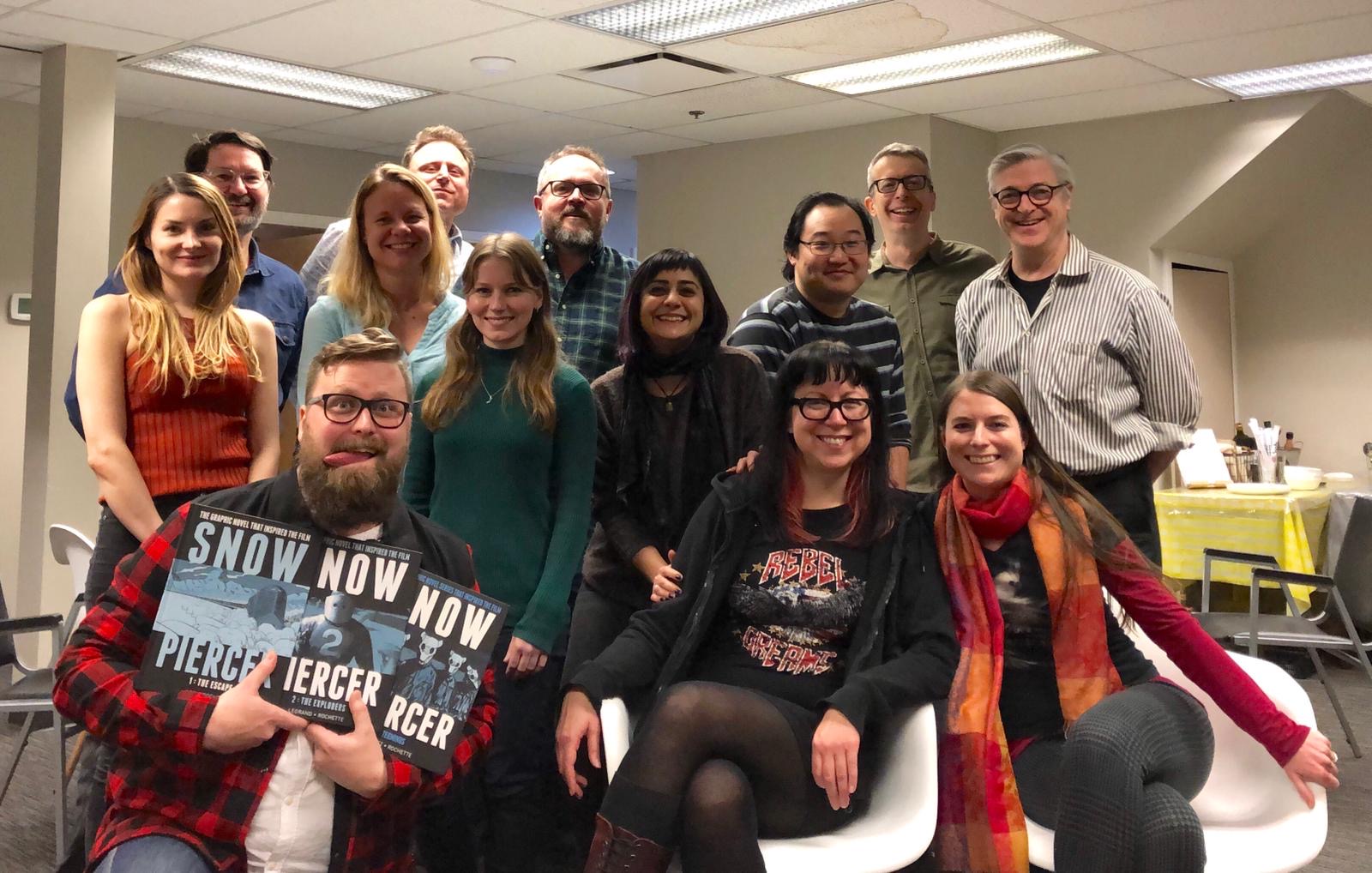
Like the two brakemen Osweiller and Till. There’s a point where you find out that Osweiller has done something completely unforgivable and he’s on everybody’s blacklist. There’s a point where they kind of have to get past that and makeup and be friends again. That happens over a number of episodes, so you just kind of have to check-in. Are they still mad at each other or are they made up? Then tracking those relationships is something you want to keep an eye on across episodes.
HULLFISH: You mentioned having the flashbacks moved between episodes. Was that because of an emotional thing or a plot thing?
PRYCHIDNY: This was all reshoot material, just a few months ago after Cheryl left. There was a flashback. which now appears in episode 3 — of Layton giving Zarah his wedding ring so she can use it to trade in case she needs it. She’s leaving the tail and she might need money. So he gives her the wedding ring.
That was planned to be at the end of episode two. The thinking of it was that’s where Leighton learns his technique, called “the night car experience” of going back into his memories. He learns that in Episode 2 so the notion was that he will do that at the end of episode 2, but it did not fit at all because it was in the middle of this action sequence where he’s trying to escape jail.
The logic of it is that: he’s in jail, so he’s not going anywhere. He has plenty of time to ruminate on things. But when you watch it in the episode, he’s in the middle of an escape plan. He can’t be sitting there ruminating even though the reality of it is you have lots of extra time to think about things.
So that ended up getting moved into episode 3, so that the action wouldn’t be interrupted. It’s way better because she gives a wedding ring back to him and episode 3 later in the episode, so it just makes more sense for those two moments to be in the same episode.
POTTER: I was thinking of the Nikki Genet flashback, which wasn’t originally in episode 5. It was footage that was originally in a different episode. But. It made more sense to put it into the episode where you’ve got Audrey of the night car looking at a picture of this person who she wants justice for. If what you’ve just seen in the flashback was a bit more about the person in the picture, then you can draw those two ideas together.
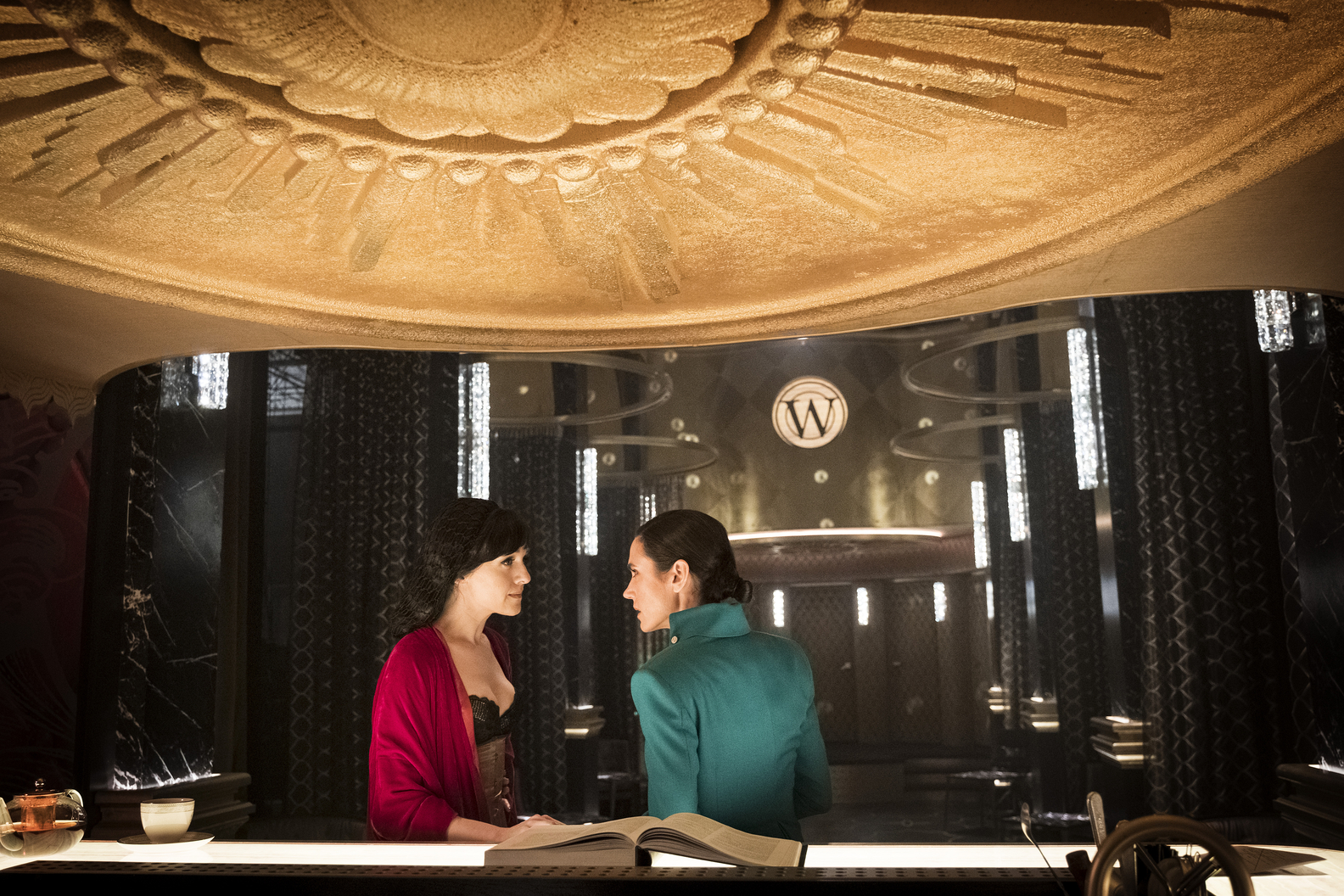
PRYCHIDNY: I didn’t know that was a move! Where was that supposed to be?
POTTER: I think it was originally an episode 4.
PRYCHIDNY: Oh. Interesting.
HULLFISH: Those are interesting things because your typical TV episode you couldn’t put something from episode 4 into episode 5 because episode 4 would’ve gotten delivered and then the next week you would’ve delivered episode 5 and you’d be stuck.
PRYCHIDNY: Yeah. That is not the reality of Snowpiercer whatsoever. There’s that normal rush to get things cut — the director’s cut, and the producer cut, and get it to network and get the feedback. There’s that normal rush to get all that done just to be efficient, but after those milestones had passed, the episodes all remained open. So even after networks had signed off and gone “Great! We love it.” Many, many, many changes still kept happening to the episodes. Because you’d see things. You look in the context of different episodes or for whatever the reason or VFX sequence changes. Many editorial changes happened up until delivery which was not that long ago.
HULLFISH: Is there any complexity or difference in cutting something that is totally fictionalized, like this world.
POTTER: People don’t know the way that the train works and so there is a lot of having to explain: Ok, there’s the tail, there’s third class, second class, first class. Since it’s starting to air on Netflix I’ve been watching it with my boyfriend and it’s just interesting the questions that he’ll ask me.
A lot of it’s about the context because Graeme Manson wrote all of this really interesting stuff — like the idea that in third class some people have relationships with more than one other person. So they’ll have a relationship where they’re a foursome because it’s lack of room and lack of space and they all love each other.
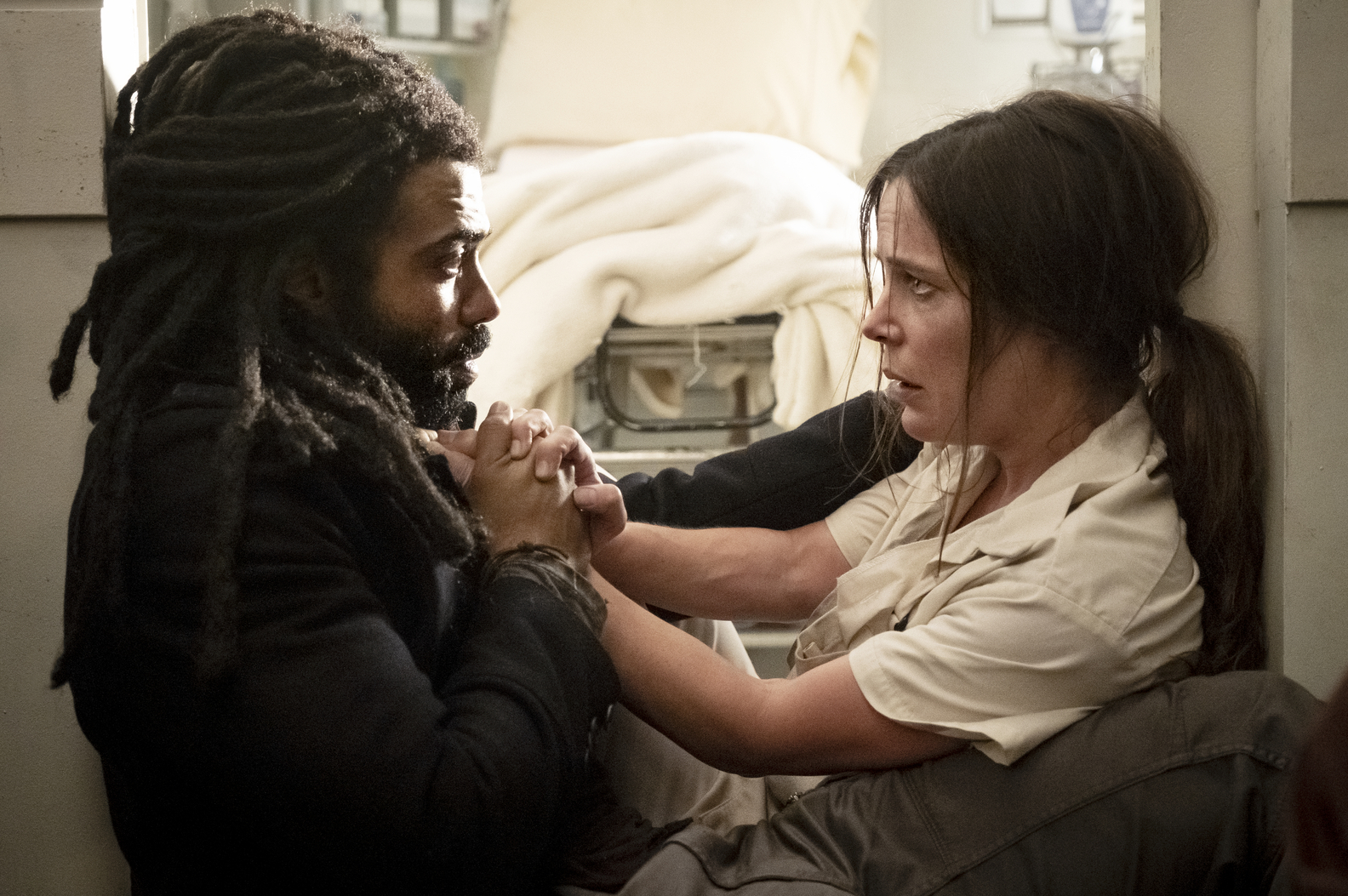
That’s not a key plot-point but it is part of the fabric of the train. It’s something that you can kind of brush past. I think Brakeman Roche explains it to Layton in a kind of passing manner as they’re moving through the Chains, which is this area where people lived like this.
So if you’re not paying attention, you might miss it, but those sort of textures and details and sort of digging a little bit deeper into the train and the hierarchies makes it really interesting, and really rich.
HULLFISH: Was sound really critical in building this world?
POTTER: The sound was really important from very early on. The number of audio tracks in Episode 1… I remember looking at the timeline layout and asking, “Jay! How are you even cutting with this? There are so many tracks here.”
They built up this incredible soundscape because the train is present in every scene. The way they shot it to have a bit of movement in the camera in all the scenes so that you’re feeling the motion of the train constantly. So you want to hear the sounds of the trains.
When you’re in first class you’re not hearing it as much because it’s more insulated. When you’re in the tail you’re hearing it really strongly and you should be seeing it more. The fact that that’s something that is in every single shot in the show — either it’s a shot OF the train or it’s a shot IN the train — aside from flashbacks to when the world was still inhabitable — you’re pretty much always in the train.
You want to hear that in the sound but even hints of it coming through in the music as well is cool, too. So this presence of the train is alive in the soundtrack constantly.
PRYCHIDNY: There was a real desire for Episode 1 to sound amazing. Everything about it being amazing, but the soundtrack is one of them.
The history of the show was that there was another pilot that was made of Snowpiercer with a lot of the same cast members. And that pilot was essentially rejected. So that just added to the anxiety that people had because we’re kind of redoing this episode again and people just wanted it to be as good as possible.
They wanted our picture-cut sound basically to sound finished when it went to the network for the first time out of the off-line. Luckily, I enjoy doing sound. I spend a lot of time supervising sound on shows that I’ve worked on, so that is in my wheelhouse, but it was an insane amount of work for episode 1 to get it up to the level that they wanted it to be.
People were very very critical, and giving notes about the texture of doors — notes you would normally give to the sound team they’re giving to the off-line picture editor!
POTTER: They set a very high bar. We had really, really good assistants in the Vancouver team. I got to work with Rhea MacDonald and Kelvin Tseng the most.
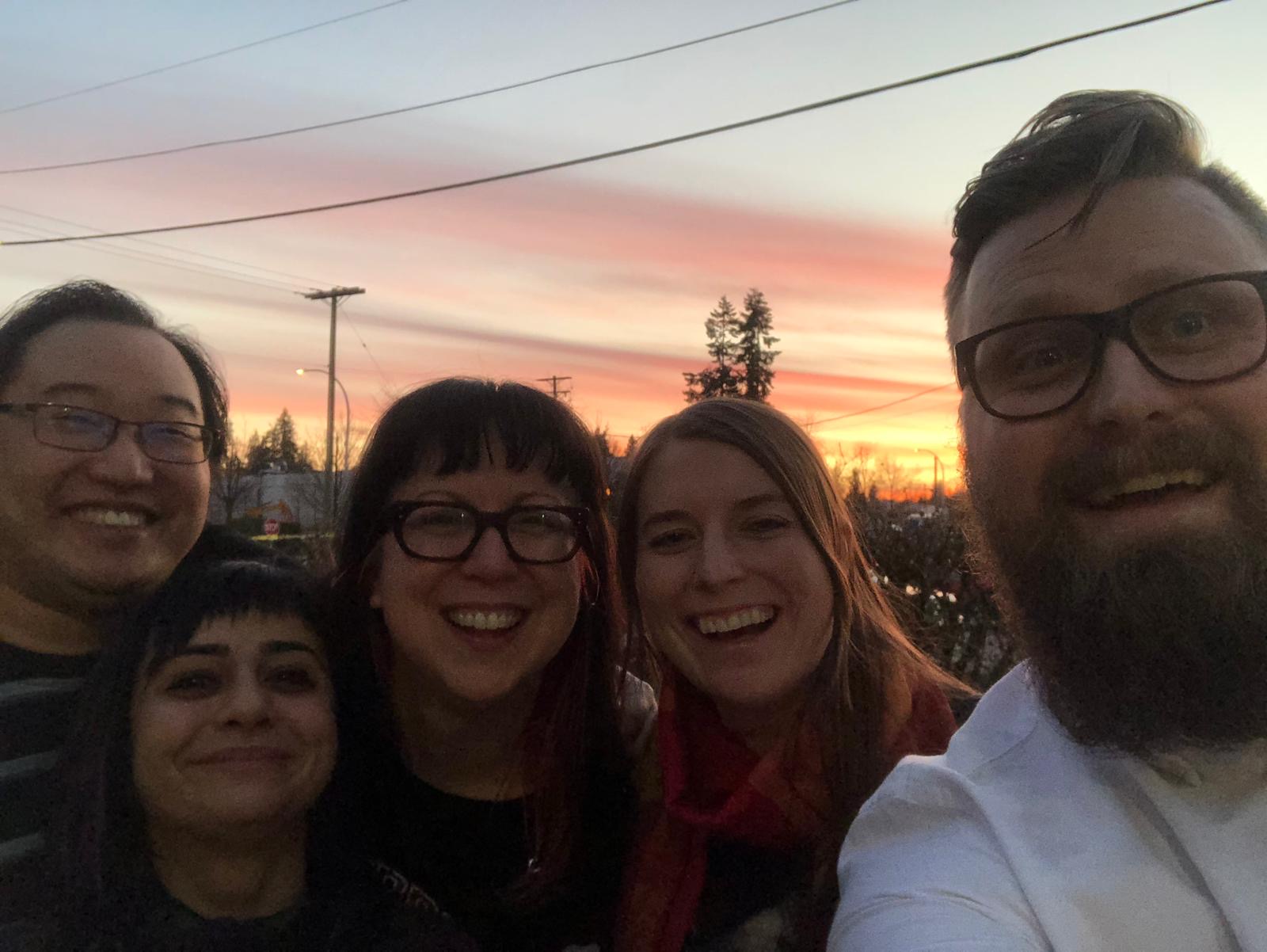
I’d assemble the scene, hand it over and say, OK. “Create! Create this world. We’re in the third class market what does it sound like? How much train can we here? How much movement is there?”
I remember there was a shot with the guy who’s head of the black market — the janitor, Terence — and behind him is a chandelier and it’s trembling the whole way through the scene. That’s the level of sound design we were getting into in the offline of: “Let’s have an element of trembling chandelier to go with the sound of the third class market and there’s music playing down there, and the sound of frying noodles” and underneath it all that constant motion of the train.
The sound design team designed a bunch of train environments, which we were able to recycle. They did have different levels of how much train you could hear. If it’s first-class it was nice and quiet. Third class was really “ruckusy.”
PRYCHIDNY: It became very common for the entire post team to do these large loop-group ADR sessions. Everyone would get together and they would all perform the background sounds! There were a lot of people on the train and it was scene-specific and for certain scenes it needed to go with the flow of the scene, because lots of big crowd scenes and people are reacting in different parts, reacting in specific ways.
So the entire post team is doing these huge performance records just to layer in for temp because that became the expectation. So Snowpiercer was probably a little more extreme than most shows, but it’s becoming more and more common that the off-line soundtrack that’s put together by the editor and the assistants — just in editorial — should sound very, very good.
Sometimes editors are becoming almost like sound designers because you are deciding the feel of how something should sound and how things transition and change. A lot of times that’s carried through to the sound team. Not all the time. A lot of times they’ll say, “We really like what’s done in the off-line. Do something like that.” That’s probably hell for sound designers — the REAL sound designers — but it’s becoming more and more common.
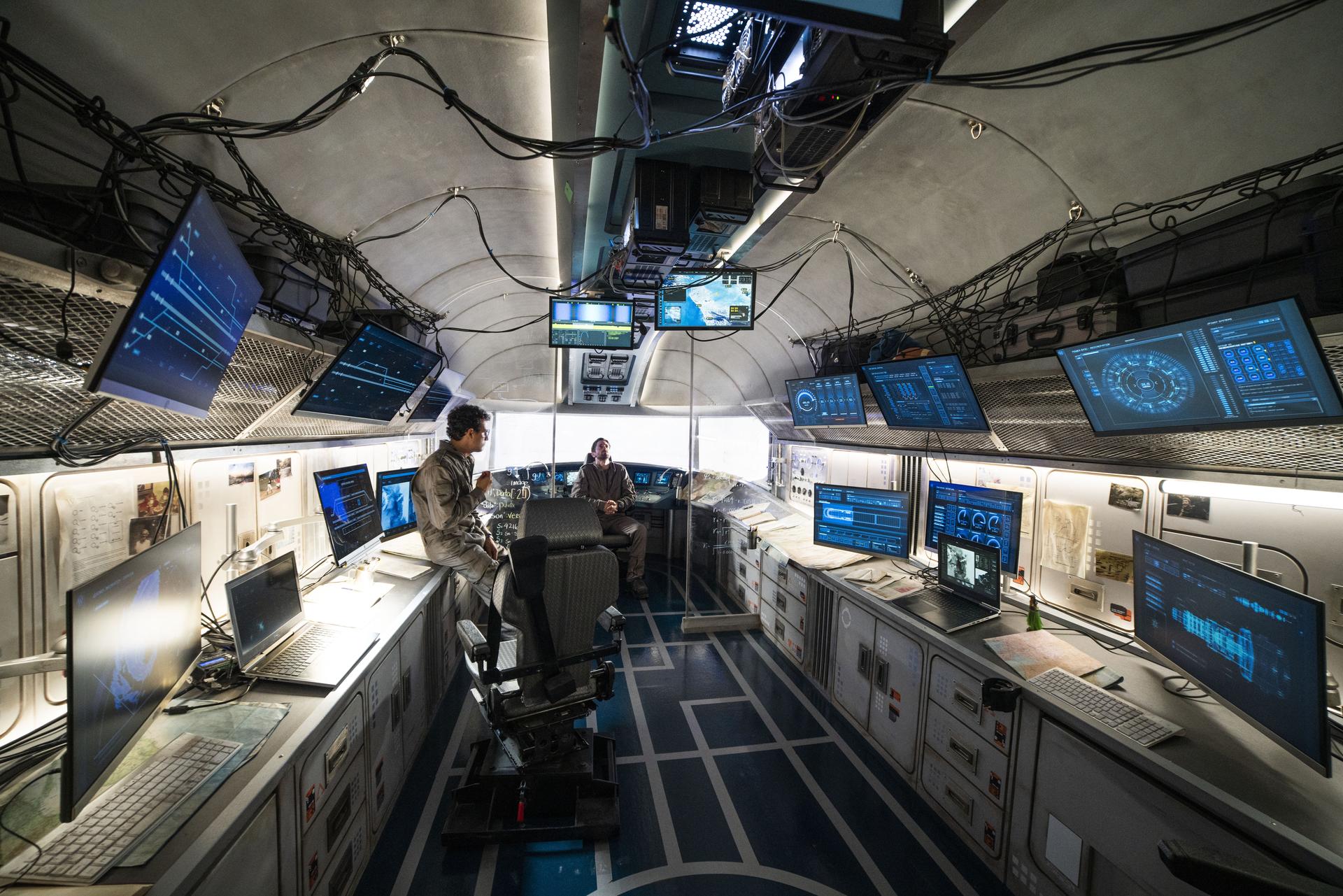 POTTER: Oh my God! It was hilarious when they were doing fight night. They needed to be this rabid crowd. I was in my room just editing away. I think they were in the room right next door to me, and I could just hear these people like screaming and yelling and crying out: “Go, Right-hand man!” Eventually, all of the assistants came out of the room and they’re all a bit red-faced because they’re all crammed in this room yelling into a microphone together being the crowd at fight night.
POTTER: Oh my God! It was hilarious when they were doing fight night. They needed to be this rabid crowd. I was in my room just editing away. I think they were in the room right next door to me, and I could just hear these people like screaming and yelling and crying out: “Go, Right-hand man!” Eventually, all of the assistants came out of the room and they’re all a bit red-faced because they’re all crammed in this room yelling into a microphone together being the crowd at fight night.
HULLFISH: I love it! You mentioned that the sound team gave you these background train noises. Did they give you any other tool kit for trying to develop this atmosphere sonically?
PRYCHIDNY: No. It was basically giving us the beds of different cars. When you get an audio bed, it’s all playing at the same level and it’s just a consistent sound, and it didn’t work. I mean, it works as a bed.
The sound of the train is much more dynamic and complex than that, so you’d start with the bed but then you’d have to layer all of these other things on top to give it sculpture and shape. So it’s not just playing as a constant sound, but there are random things happening and layers and all the different stuff.
So you’d have the bed but then you have many, many tracks of just these additional layered-in sounds.
HULLFISH: So you said that a lot of that is done by your assistants — or at least started by your assistants. Is that a really important skill for an assistant editor?
POTTER: Oh absolutely! In my opinion, it’s probably one of the things that I find most important when looking at an assistant in terms of their actual skill set — things that they can do aside from just being nice people that you want to spend lots of time with.
The sound stuff is probably one of the things that I lean most heavily on my assistants for.
PRYCHIDNY: Yeah. To me, that’s really the main thing at this point,
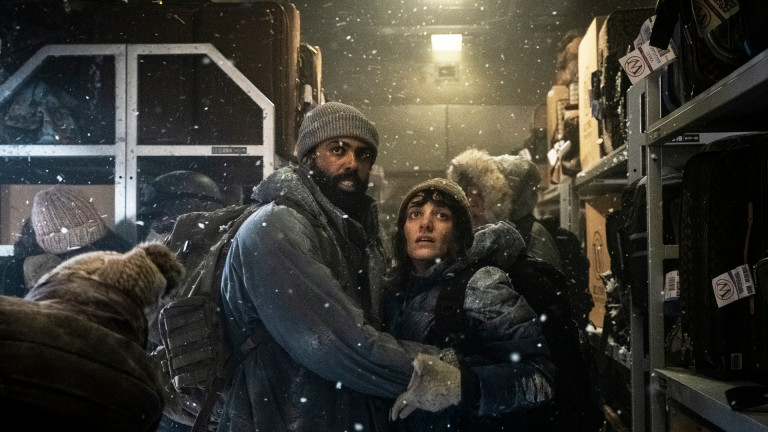
I’ve worked on a number of these types of shows that have these very, very high sound requirements. So that’s really the main thing for an assistant. I guide it and I give a lot of input, but they need to do a lot of their own creativity.
HULLFISH: Those tools that they’re using — is it just stock sound effects libraries at that point trying to build that stuff out or are they Foleying… you described a bunch of looping….
POTTER: It was a bit of column A and a bit of column B, then you look in the libraries. Pretty much everybody’s got their sound effects library. All of the same ones keep coming around.
When you work on a show, people pool their libraries together. Something I’ve noticed — even from my years as an assistant — you’re just collecting sound effects constantly. Putting together your little suitcase of things that you can bring to a show. So you look there first. That’s where you’re going to end up having to go for stuff like gunshots, cars, things that you’re not really going to have the ability to go out and record that yourself.
It’s more like if someone pours a cup of tea in a really specific way. One that I remember having to do a few months back it was taking a champagne glass and tapping it with a spoon, like for a toast. That’s not something we could find in the library, but you can make it yourself pretty easily.
PRYCHIDNY: Definitely. There’s a lot of great sound libraries and lots of great sounds that they can pull from, but it’s similar to what I was saying about the bed. It’s more than just finding a sound effect and putting it in.
Often it’s this layering of sound effects. I mean, they become sound editors at this point. Like, a punch isn’t a punch. It’s the punch, it’s the cloth. It’s the sound design that goes along with it, so a punch may have five or six sound effects associated with it.
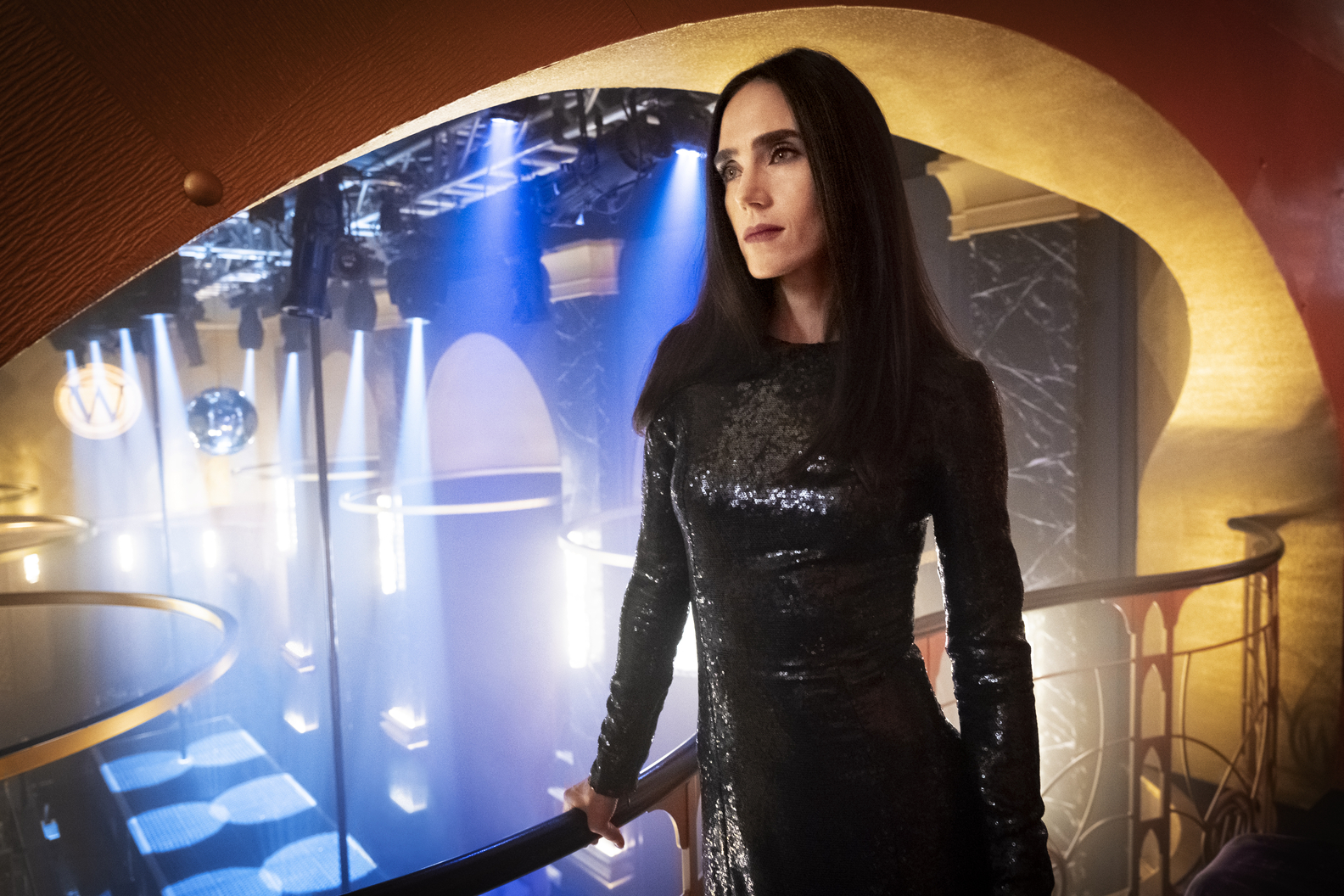
HULLFISH: So one of the things I’m hearing from you Cheryl, is that if you’re an assistant — and the first time that we met you were assisting Pietro on The Martian — start collecting sound effects. Start building that tool kit. Is that what I’m hearing?
PRYCHIDNY: Oh yeah.
POTTER: Oh yeah absolutely.
PRYCHIDNY: My assistant on Snowpiercer — Sam Dewar — definitely came with a huge sound effects library which was a great help.
HULLFISH: I’m surprised that those libraries help just because this world is so unique.
PRYCHIDNY: It’s a lot of being creative. One of the sound effects that I still see in my timelines is “dry ice.” There’s no dry ice in the scene. There’s nothing to indicate that. But for some reason emotionally it’s working to have these dry ice sounds in the train. It’s stuff like that.
It’s not going to the obvious sound effects. It’s going to something unusual.
HULLFISH: Cheryl, you weren’t able to go to Mars to record special spacesuit footsteps in Martian sand?
POTTER: (laughs) No. But on The Martian it was a lot of “airless wind.” And when he was inside the Hab, it was the machine noise that would be constant. The hum. Part of it was using your imagination: looking at these photos of the surface of Mars that they’ve been able to actually capture and ask, “What do we think that’s going to sound like?”
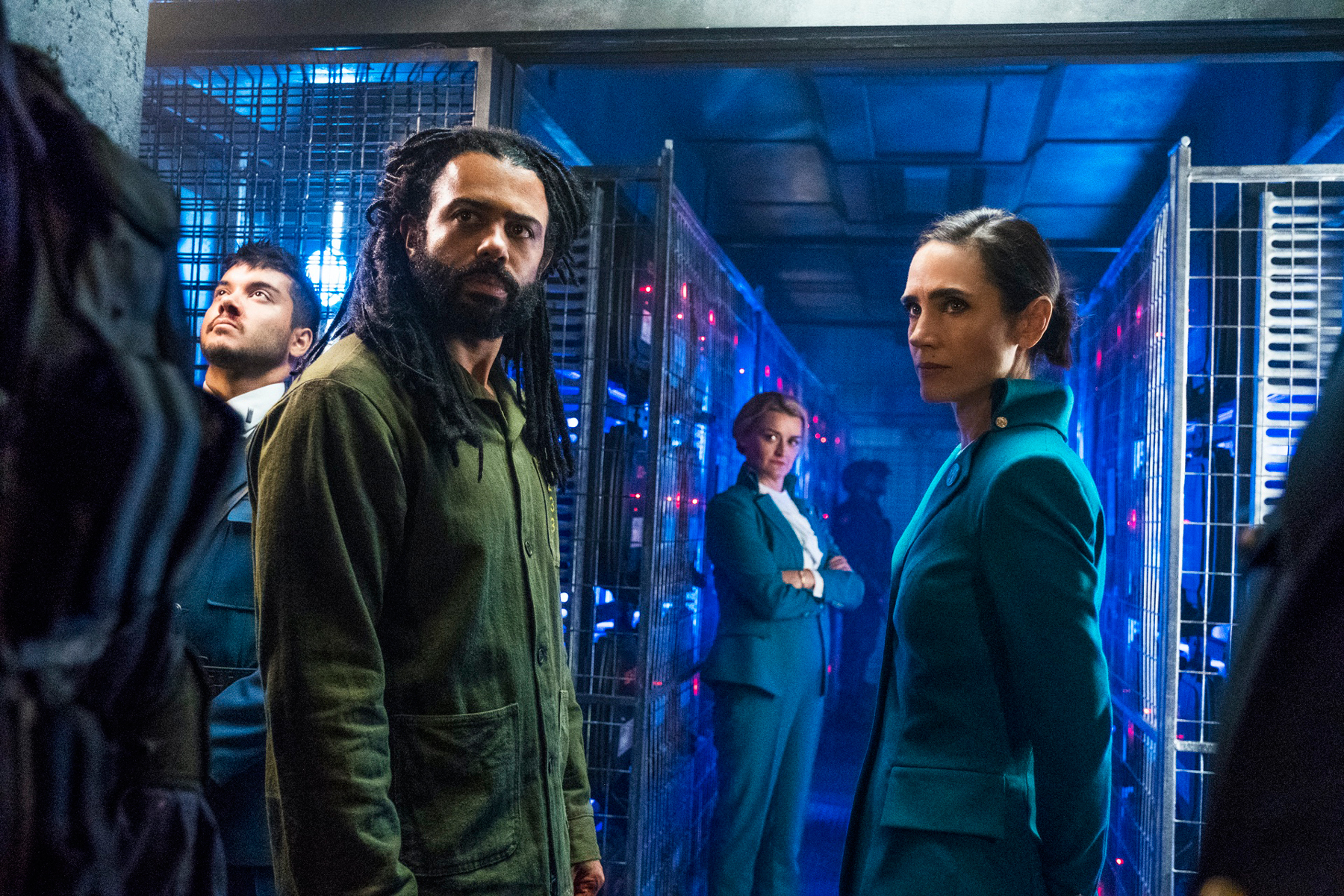
Remembering the fact that you’re always in a suit, so you’re always going to be hearing the noises of the sounds of the suit. You can relate that to Snowpiercer: What does this amazing lifesaving ark of a train sound like? And depending on where you are on the train it’s gonna sound really different.
PRYCHIDNY: Everything is always very emotionally-led for me. So when I’m thinking about the sound of a scene, what place gives me the emotion that I want to get out of this particular scene.
For first-class, I just had the feeling that it should feel like that feeling when you’re in an airplane — that kind of very confined, it’s quiet but it’s loud kind of feeling. I just ask them to pull a lot of airplane sounds and use those in those scenes.
So it’s thinking outside the box because if you’re just looking for train sounds that’s gonna get boring really fast.
HULLFISH: And it’s not your average train.
PRYCHIDNY: Yeah exactly.
POTTER: And so much of it’s about seeing what’s in the scene. Like, there’s this wonderful scene at the beginning of one of my episodes where it’s just Ruth — who’s one of the hospitality people — and she’s just checking the tables in first class. The sound that Rhea put in was just this gentle tremor of the cutlery on the tables. It’s just subtly there. It’s that detail. It just gives it a little “somethin’-somethin’.”.
HULLFISH: Again, I would think that “trembling cutlery” is not something you find in a sound library.
PRYCHIDNY: Right, so could you find something that sounds like trembling cutlery? Or create trembling cutlery?
HULLFISH: You guys don’t want me as your assistant editor. Never mind. (they laugh).
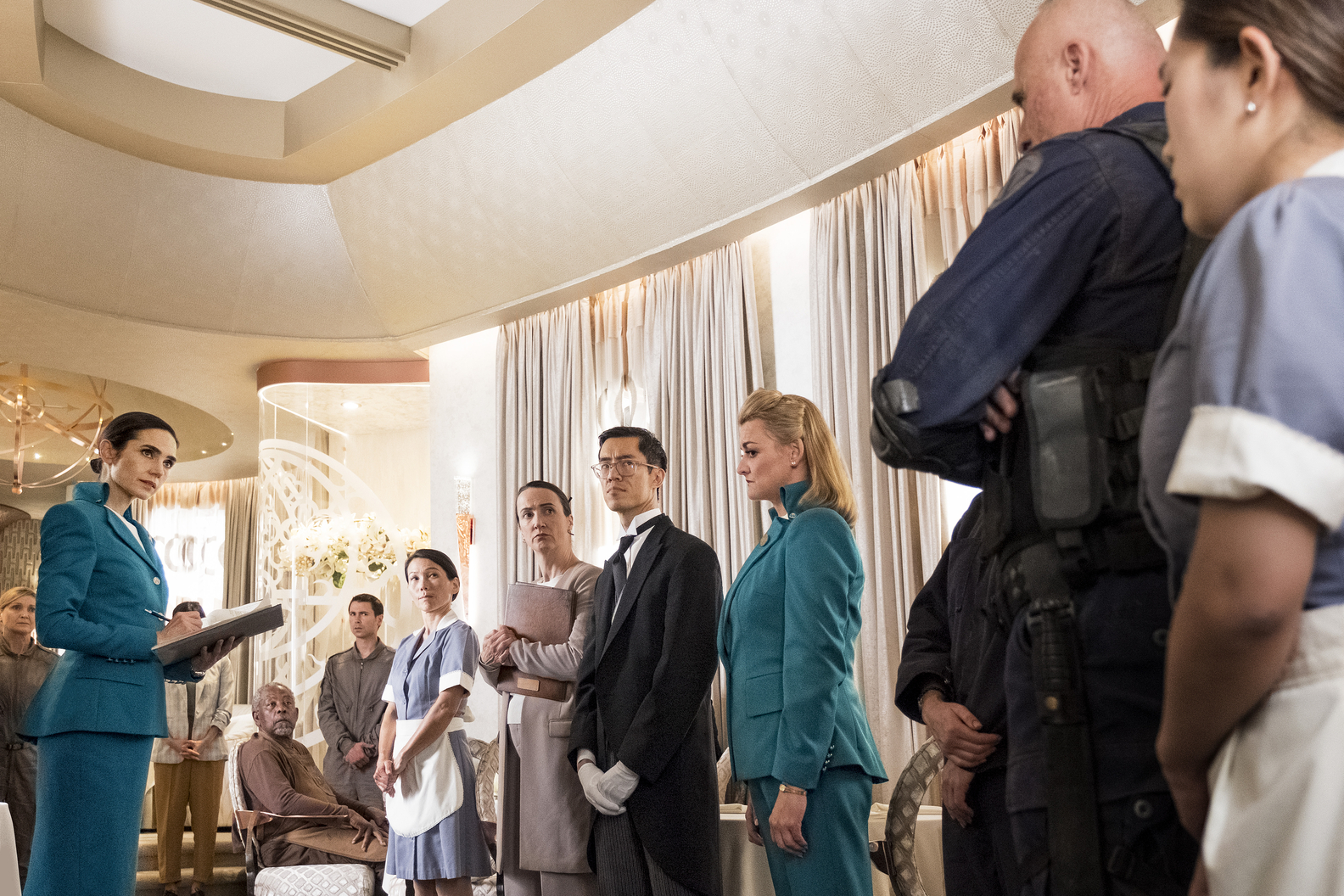
PRYCHIDNY: Steve comes back and says, “I searched for cutlery. There’s nothing.”
POTTER: I needed the sound of slicing through flesh and I think that we ended up using a banana peel. Who thinks of that? Where does that come from?
HULLFISH: Did either one of you see the documentary 78/52?
PRYCHIDNY: Was that the Psycho one?
HULLFISH: Yeah. There’s an entire documentary about just the Psycho shower scene. That’s it. Not even the rest of Psycho. It’s called that because it’s 78 setups and 52 shots in the scene.
But one of the big things is that they went through something like 24 melon auditions to figure out which melon sounded most like Janet Leigh. (I did an interview about the editing of this documentary.)
PRYCHIDNY: I think it’s appropriate that we’re talking so much about sound because it so much time is spent on sound. A lot of that gets thrown out.
POTTER: And it informs the edit in so many ways.
PRYCHIDNY: Yeah.
POTTER: The way that the sound interacts. A cut can feel weird and then you put a door slam noise.
PRYCHIDNY: Yeah exactly.
POTTER: And suddenly it makes sense.
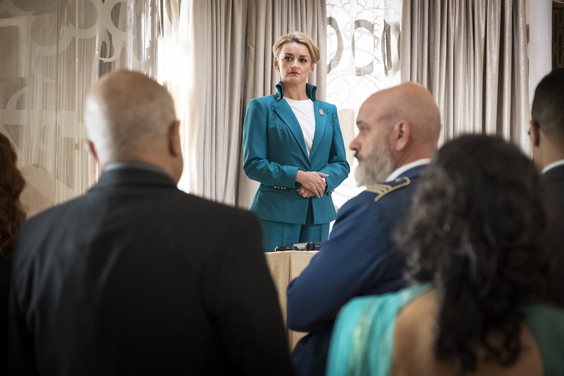
HULLFISH: I think sound is very important for fantastic worlds because if you peel the sound out of Star Trek or Star Wars or Lord of the Rings and you start thinking: Are they standing in front of a paper mâché mountain? What the heck is that thing? But add the sounds and you believe it.
I want to add to this idea of the assistants — it sounds like so much of what they’re doing is sound for the team. What are you able to do or what are they able to do to get better and to try to move on from being an assistant for you and becoming an editor? What do you think is important for them to be able to advance their career from where they are assisting you?
POTTER: Two things leap to mind. The first one seems really straightforward — if you want to edit, edit. The other thing is: if you want to edit, tell people you want to edit. Because if they don’t know that that’s what you’re aspiring to and that’s a step you want to take, then how can they help you?
Rhea assembled a bunch of scenes for me and we really tried to work it so that when she took one of my scenes to put it together, it became her scene. She’d show it to me. I’d give her notes and she’d go and do another version and so that way she’s getting the experience of doing notes and trying to take the scene in a specific direction and responding to notes.
You need to make it clear it’s something you want to do. You need to invest the time to practice it and also you need to find opportunities to edit in your own right, even if it’s just short films so that you’ve got product that you can show and say, “I did this.”
It’s one thing to be able to say, “This scene in this show — I’m not credited for it — but that’s my scene.” That’s not a very easy way to sell yourself to someone who’s maybe a director of a short film who’s looking for an editor.
Whereas if you can say, “Here’s a short. I put it together. This was all me. I did this on my own. All the edits are mine.” It shows your sensibility. You can cut. You can do it.
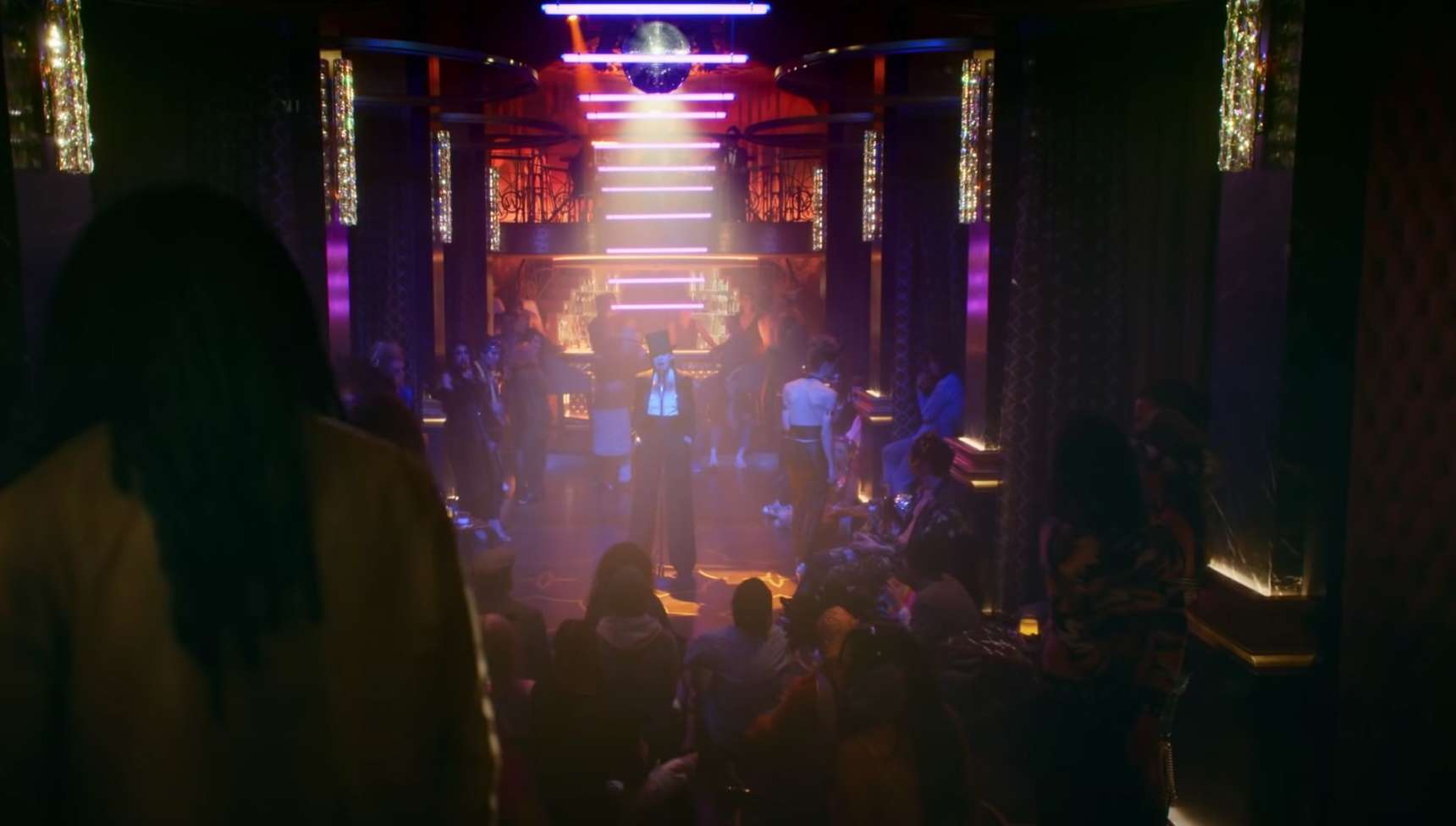 PRYCHIDNY: Yeah, I agree with that. I’ve definitely heard from assistants who say, “I don’t feel comfortable asking an editor for something like that.” Some people think it should really be on the editor to do that, if they want to give that opportunity.
PRYCHIDNY: Yeah, I agree with that. I’ve definitely heard from assistants who say, “I don’t feel comfortable asking an editor for something like that.” Some people think it should really be on the editor to do that, if they want to give that opportunity.
I do struggle with this because I don’t need any help picture editing. I’m perfectly happy covering that workload myself, so it’s just not something I would ever ask an assistant to do, but if it was something that they wanted to do, then I would make an effort to give them a scene, have them keep it through the notes and various stages — as far as it can go, just as a mentoring thing not as something that I need help with.
But I’d only do that with someone — not even if they asked — but if I really have a sense that that’s where they want their career to go. Because you work with different assistants who have different goals. Maybe they don’t want to be an editor or maybe they want to go into post supervising or whatever.
So, if I don’t even have a sense that that’s who they are as a person, then I’m not going to be offering them these opportunities. It takes away from my time, which I’m happy to do, but only if it’s worthwhile for the person.
It’s a bit of a two-way street. Assistants should make it clear where they want their careers to go. Also, I think assistants don’t understand often that there are people who want to help them get to where they want to go.
Often the default belief is that “Nobody cares about me or what I have to offer” which isn’t really true. If you know about a person and what they want to do oftentimes there are people who want to help you, so if you make it clear what your goals are, what your interests are, and even if you’re not so bold as to say, “Can I cut scenes for you?” If at least you’re saying, “That’s where I want to go and how do I get better?” Then the editor can suggest that as an option if you’re afraid to ask outright.
But I think it does have to come from the assistant because I’m not just gonna offer things willy-nilly to anybody if I don’t know that it’s what they want.
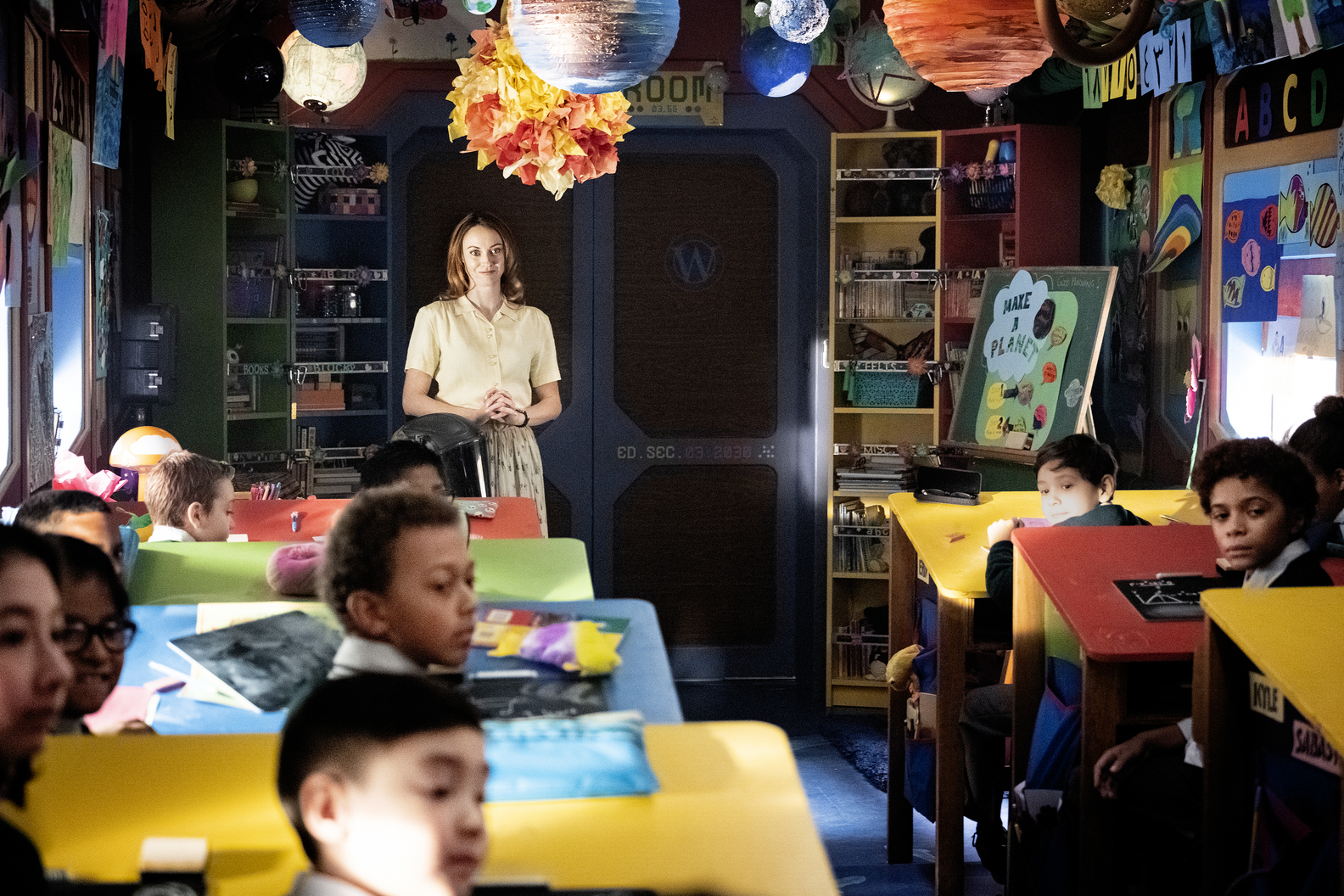
HULLFISH: Since we’re talking about moving forward from being an assistant to being an editor, Jay you mentioned your background a little bit. How did you move forward to where you are now in your career?
PRYCHIDNY: There are two paths, I guess. You either start low down on the bottom of the ladder in a post department and you work your way up from trainee to assistant to editor, or you start as an editor working on really low budget things and work your way up to higher and higher projects, which is how I did it.
I was never an assistant — other than my own assistant. It worked for me, so I do advocate that to other people, because I do feel like one of the big hurdles is “how do people see you?” For me at least, the hurdle of going from a low budget editor to a documentary editor to reality editor to scripted editor were easier because I’m still an editor and people still think of you as an editor.
Whereas I think the hurdle of going from Assistant Editor is harder because people think of you as an assistant.
HULLFISH: The two of you had two completely different approaches to the same chair. So Cheryl, what about you?
POTTER: I started as an assistant. I didn’t start as a runner or trainee. I was lucky enough to be able to start pretty much as the equivalent of a first assisting role in low budget TV in Australia and then I was just sort of working my way up and worked on bigger and bigger shows as an assistant.
Then once I was working on feature films for Tim Burton and Ridley Scott, I got to the point where I wasn’t assisting anymore, I was associate editing or additional editing, which is all the sort of creative parts of assisting without any of the drudge work — which was pretty fun actually. Then it’s all care, no responsibility. You get to do all the creative stuff but at the end of the day the buck stops with the person you’re working under.
That was a wonderful environment for me to learn from some of the greatest editors. Some of the greatest people. Getting to work with Pietro Scalia. Getting to work with Dody Dorn, Mike McCusker. See the way that they work. The way they approach things.
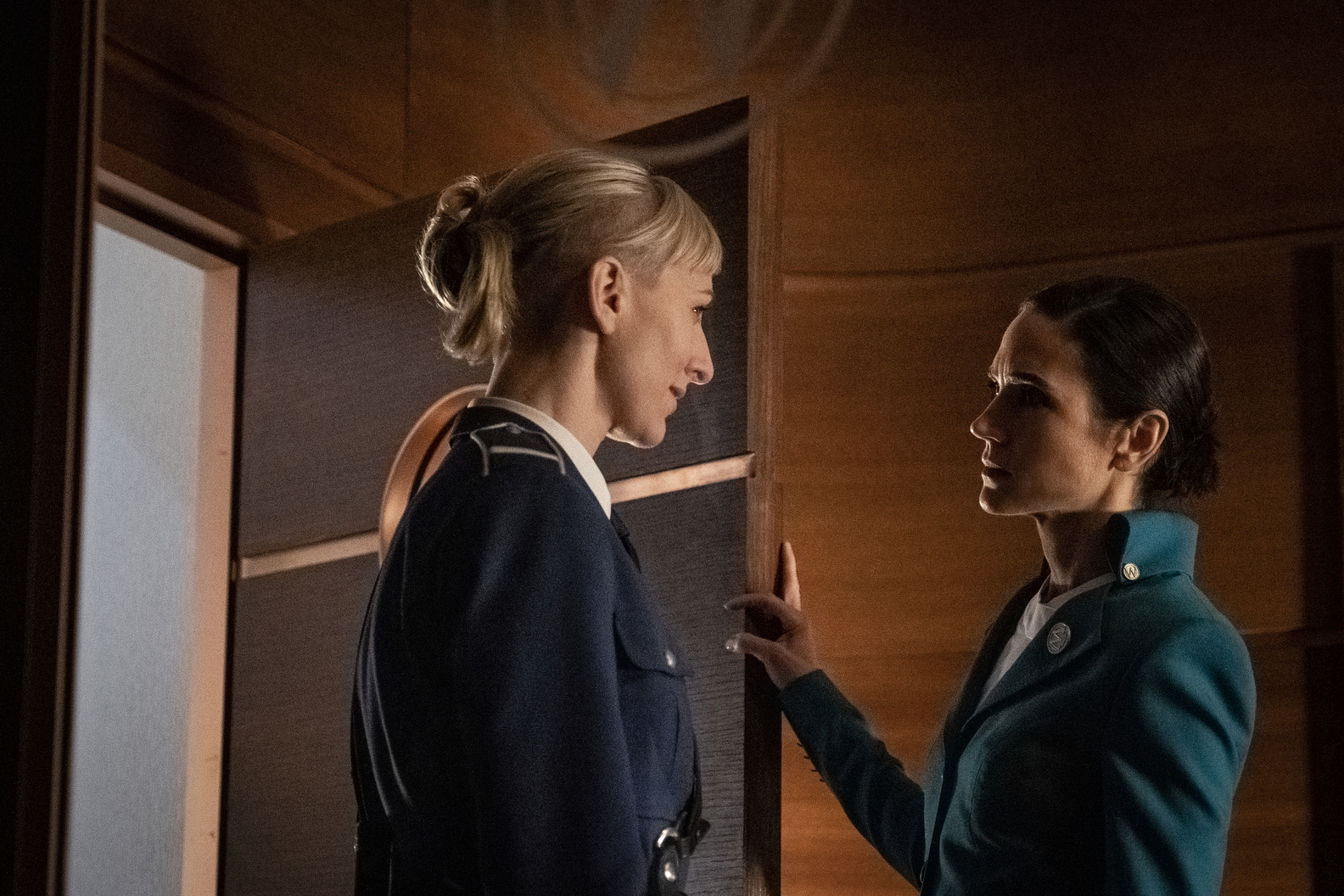
It was just a wonderful lesson in not just how to edit but how to deal with the political environment. How to deal with producers and directors and the approach and making the cutting room a safe space for the creative people that you have to deal with.
There was a point where I decided that I only want to edit. I don’t want to take additional editing roles because even when I’m an additional editor — even though I’m an editor and the word editor is in the name — I still don’t own the product that comes out at the end, because it’s still a film that’s edited by Pietro Scalia or the person whose name goes at the front, rather than my name that goes at the back.
There was a point where I wanted it to happen so I had to pursue editing jobs. I could keep those sweet additional editing roles on these really great, big-budget films and I’d be sweet for the rest of my career it’d be fine. But I wanted to cut in my own right.
Also I was aware of the fact that there were all these people in the hierarchy below me — the first assistant editor, the second assistant editors — and the longer I keep working with the editor that I’m working with they don’t get to climb the ladder.
HULLFISH: How did you get that first opportunity to switch from additional or associate to full editor?
POTTER: I got an agent. That was part of getting taken seriously as an editor. Once I had an agent they were able to put me forward specifically for editing roles and when I got my first television job on Hanna, that was the beginning.
Once I had these two episodes — a really good strong show, got good action and good acting — from there it spiraled. The work on Hanna got me the work on Snowpiercer. The work on Snowpiercer got me the work on The Alienist. Now, these are the things I’ve done on my own. But I still have all these great credits on these amazing feature films as well. Now I’ve got solo editing credits to back it up.
HULLFISH: My direction is more like Jay’s. I never assisted other than the assisting I have to do for myself on lower budget films. But then the question is, “How do you get taken seriously from that?”.
PRYCHIDNY: For several years that was definitely the biggest thing I had to deal with because I was trying to move in my career very quickly and so it’s a lot of people who are looking at you like, “You can’t do THIS. You’ve done THAT but you can’t do THIS.” So it was years of people saying — directly or indirectly — “You can’t do this. You’ve only done that.”
It’s only been in more recent years where I people are saying, We’re so happy to have you!”
I think the challenge that Cheryl’s talking about when you’re working in a lower position in these higher and higher productions it almost becomes harder for some people to switch. It’s almost more feasible at a lower production that they give an assistant a chance to edit, but if you’re working on a top, top tier production, it becomes rarer and rarer. It often becomes that people have to take a step back and work on lower tier productions in order to get that credit upgrade.
And sometimes when you do that people are sacrificing some of the contacts they know because their contacts aren’t working on those lower tier productions.
HULLFISH: To have the two of you with such different experiences side by side is very interesting. This is one of the reasons why I love doing Art of the Cut — because you just learn a lot of really interesting things and different things from great people like both of you. Thank you.
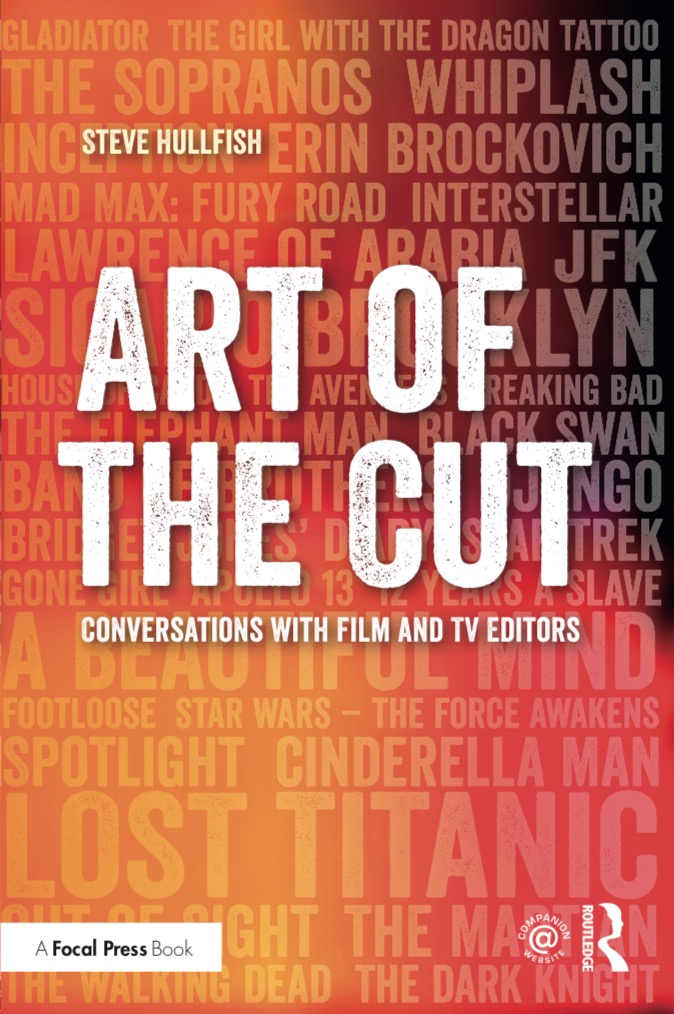
PRYCHIDNY: Thank you. Bye.
POTTER: Bye. Bye.
To read more interviews in the Art of the Cut series, check out THIS LINK and follow me on Twitter @stevehullfish or on imdb.
The first 50 interviews in the series provided the material for the book, “Art of the Cut: Conversations with Film and TV Editors.” This is a unique book that breaks down interviews with many of the world’s best editors and organizes it into a virtual roundtable discussion centering on the topics editors care about. It is a powerful tool for experienced and aspiring editors alike. Cinemontage and CinemaEditor magazine both gave it rave reviews. No other book provides the breadth of opinion and experience. Combined, the editors featured in the book have edited for over 1,000 years on many of the most iconic, critically acclaimed and biggest box office hits in the history of cinema.

Filmtools
Filmmakers go-to destination for pre-production, production & post production equipment!
Shop Now